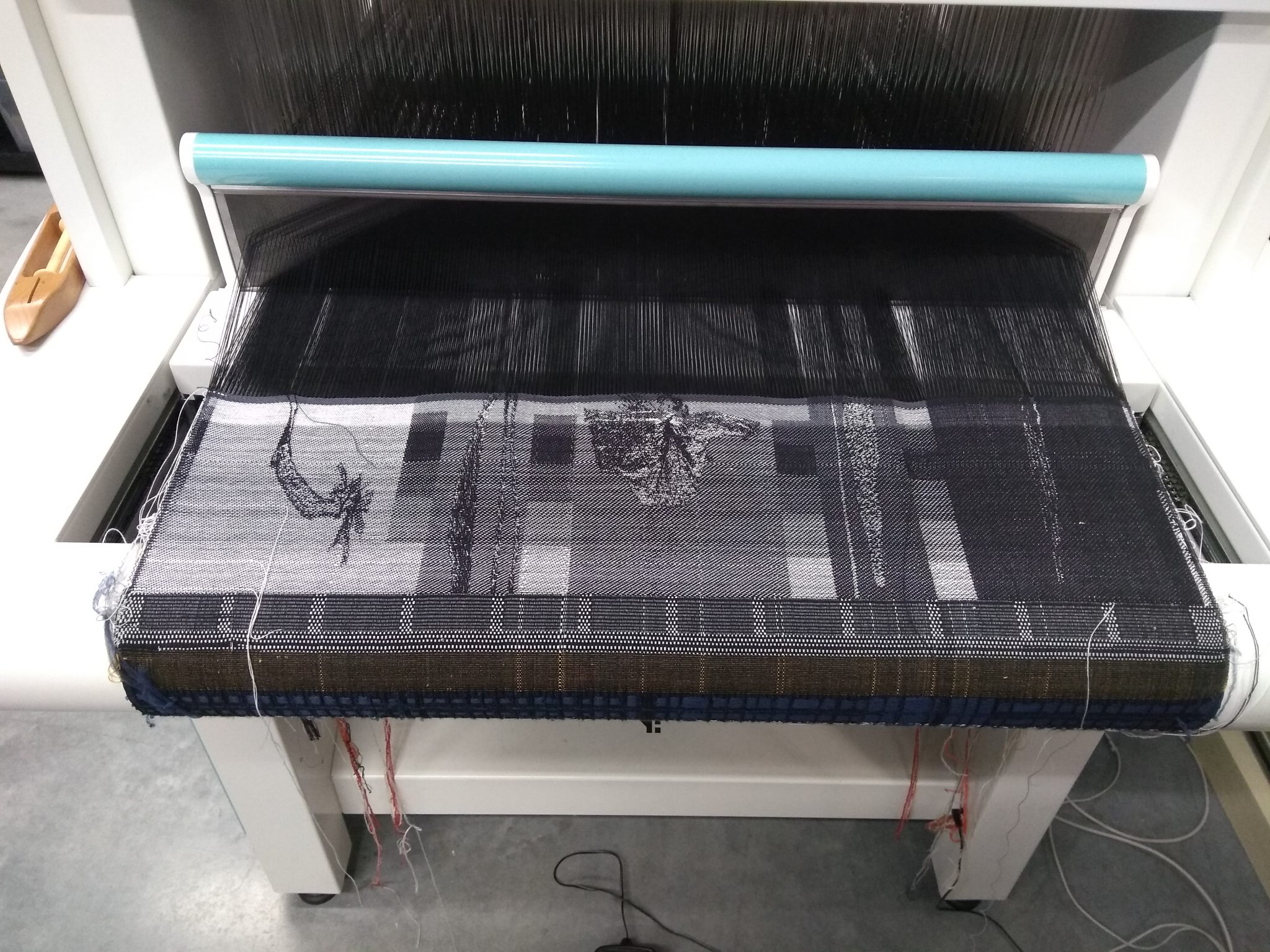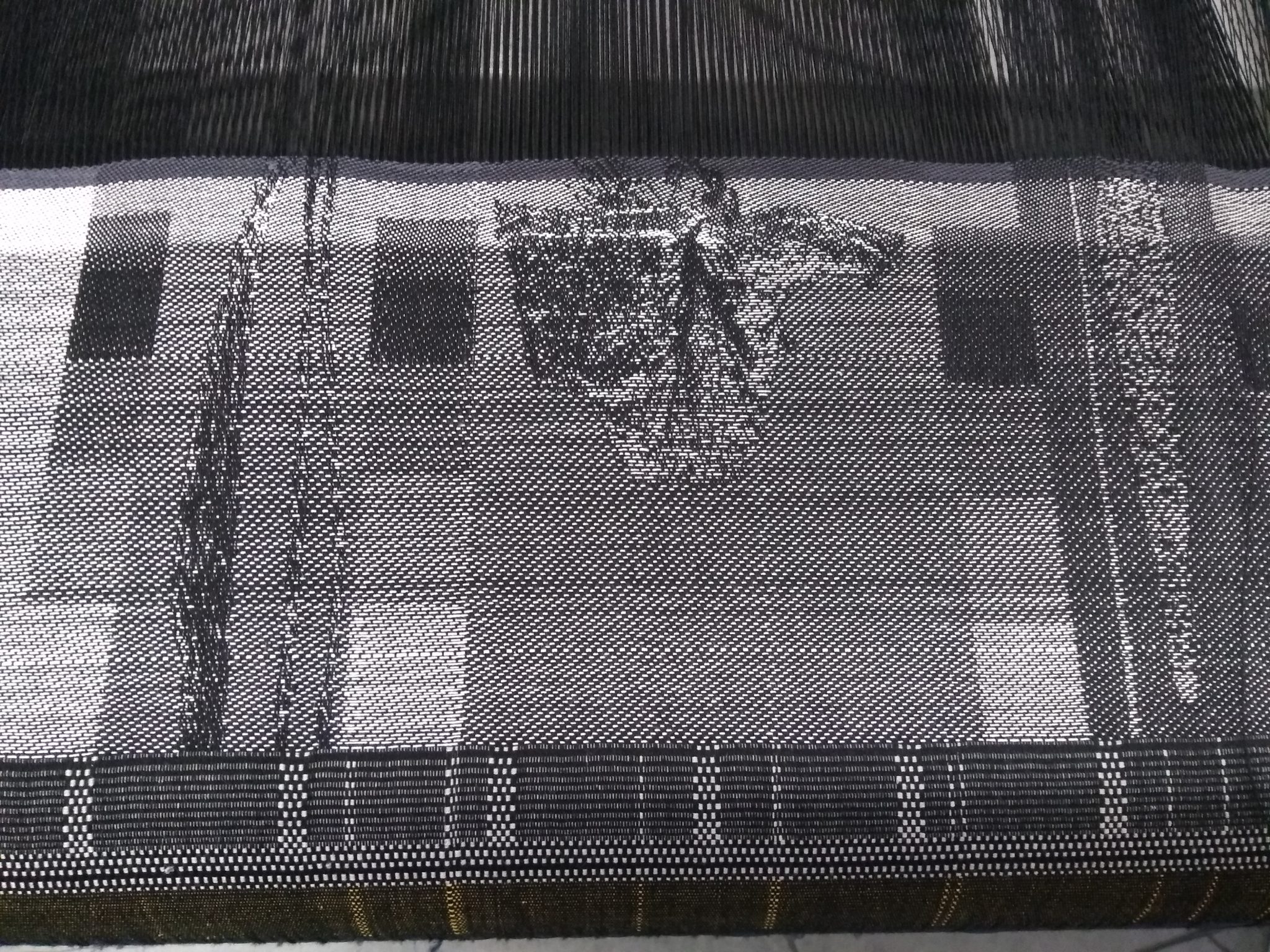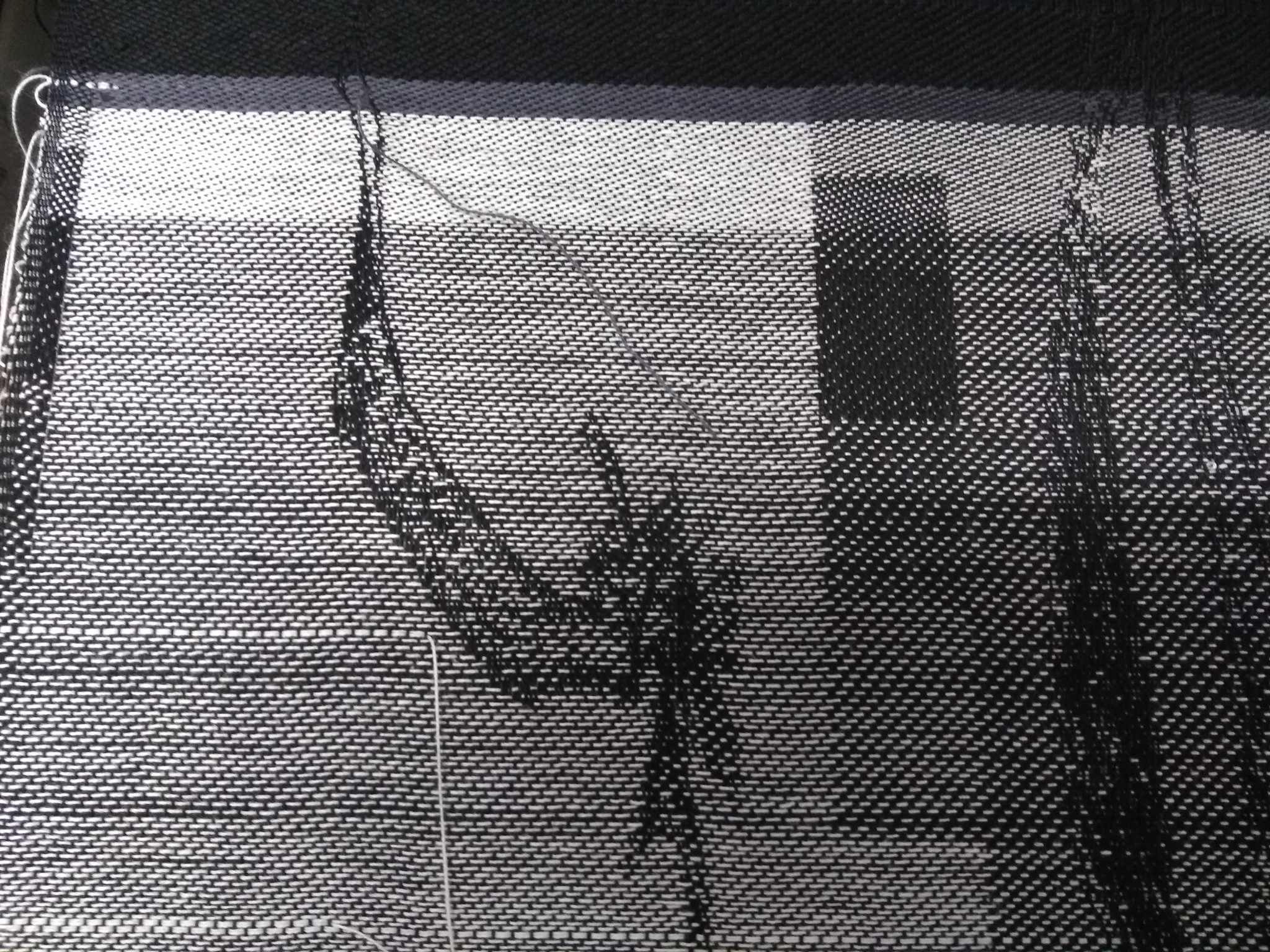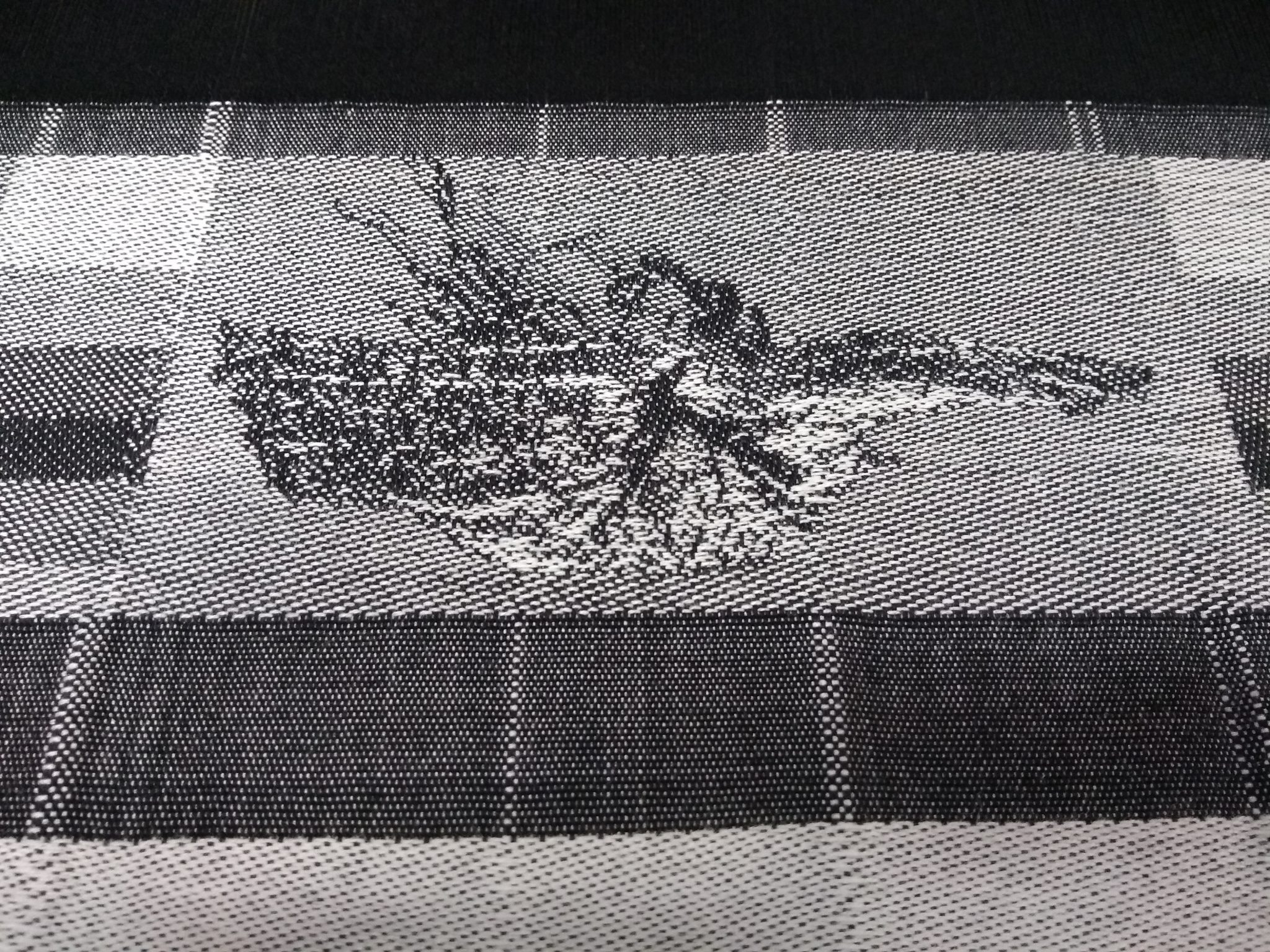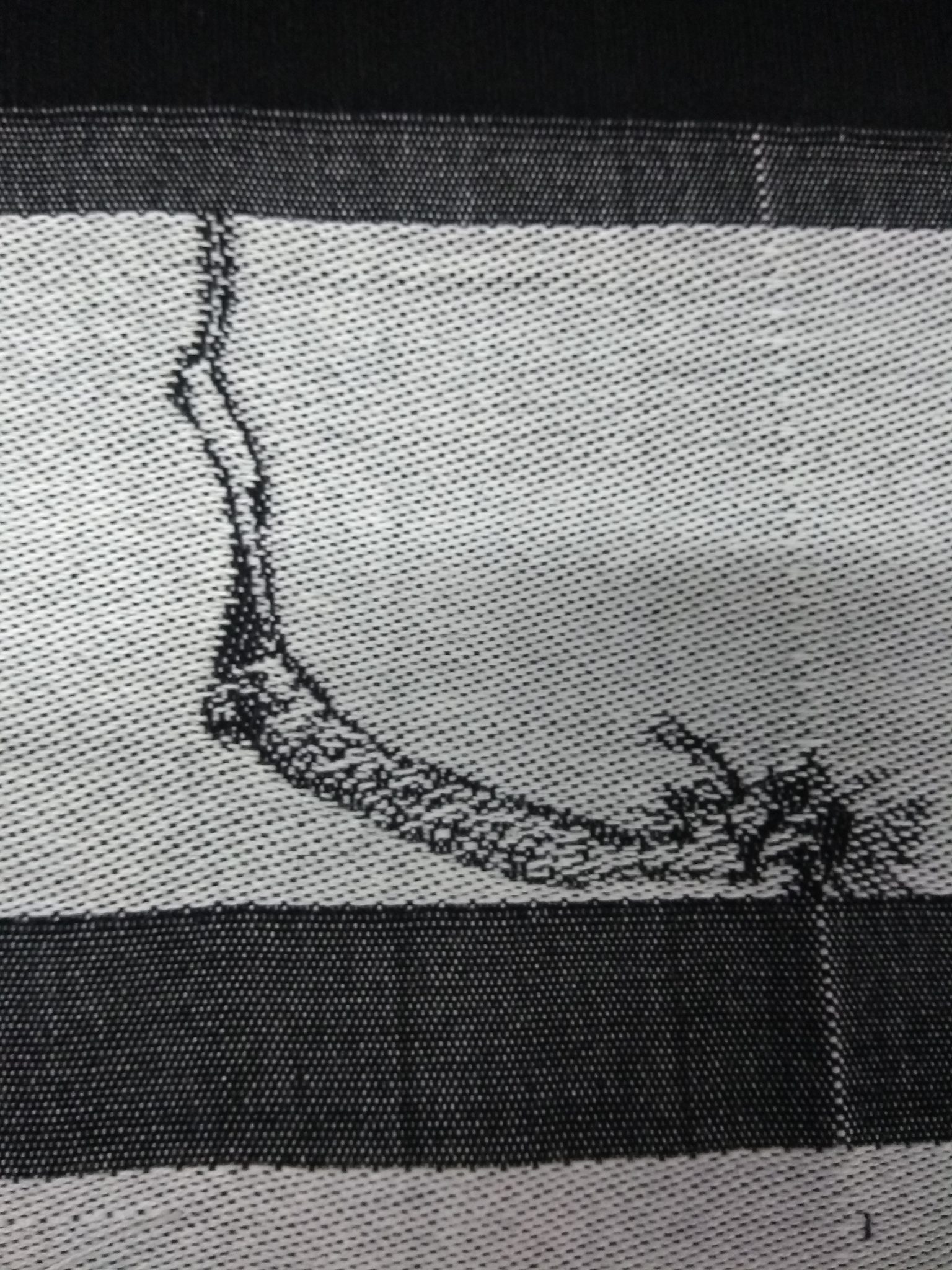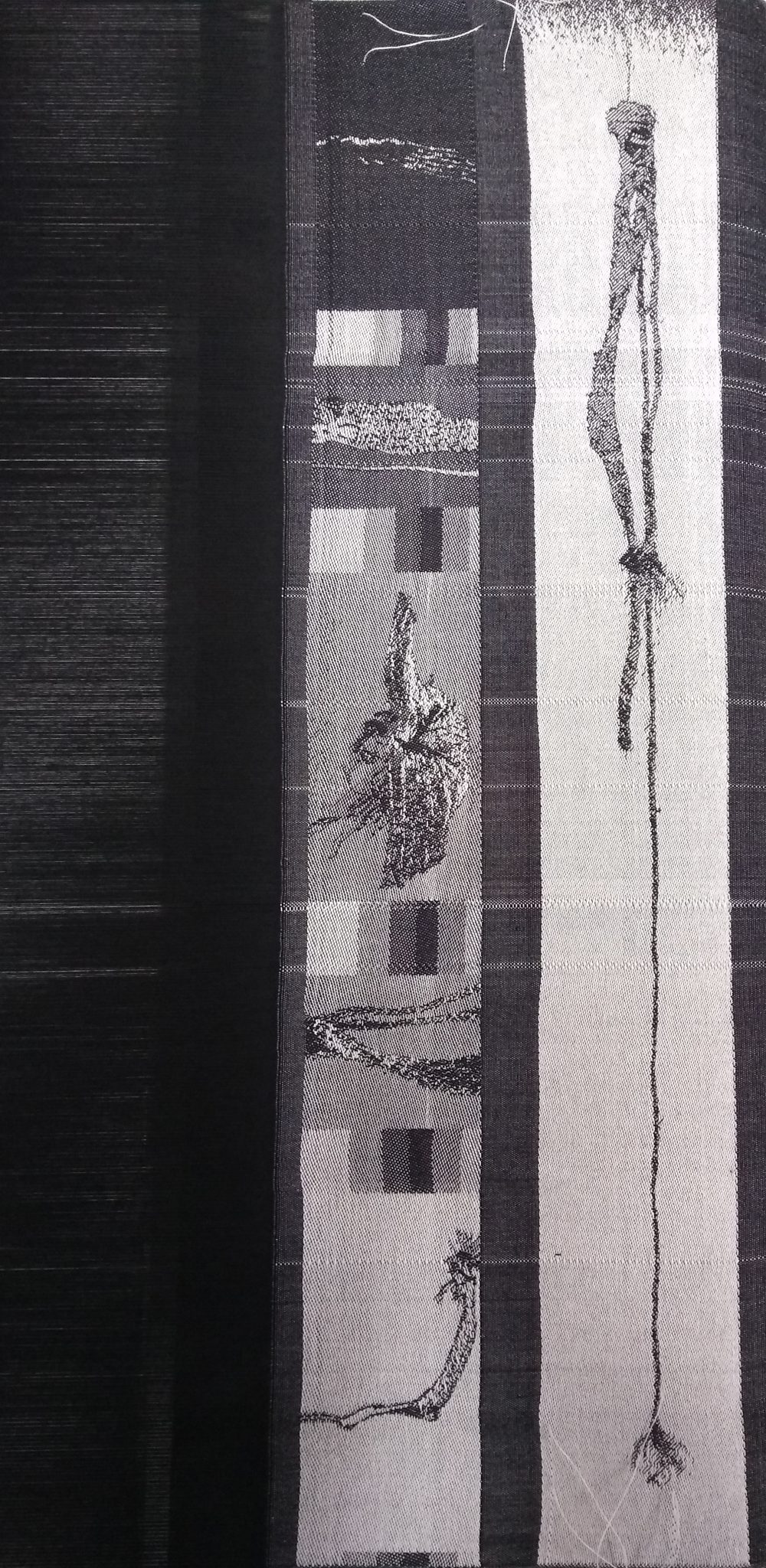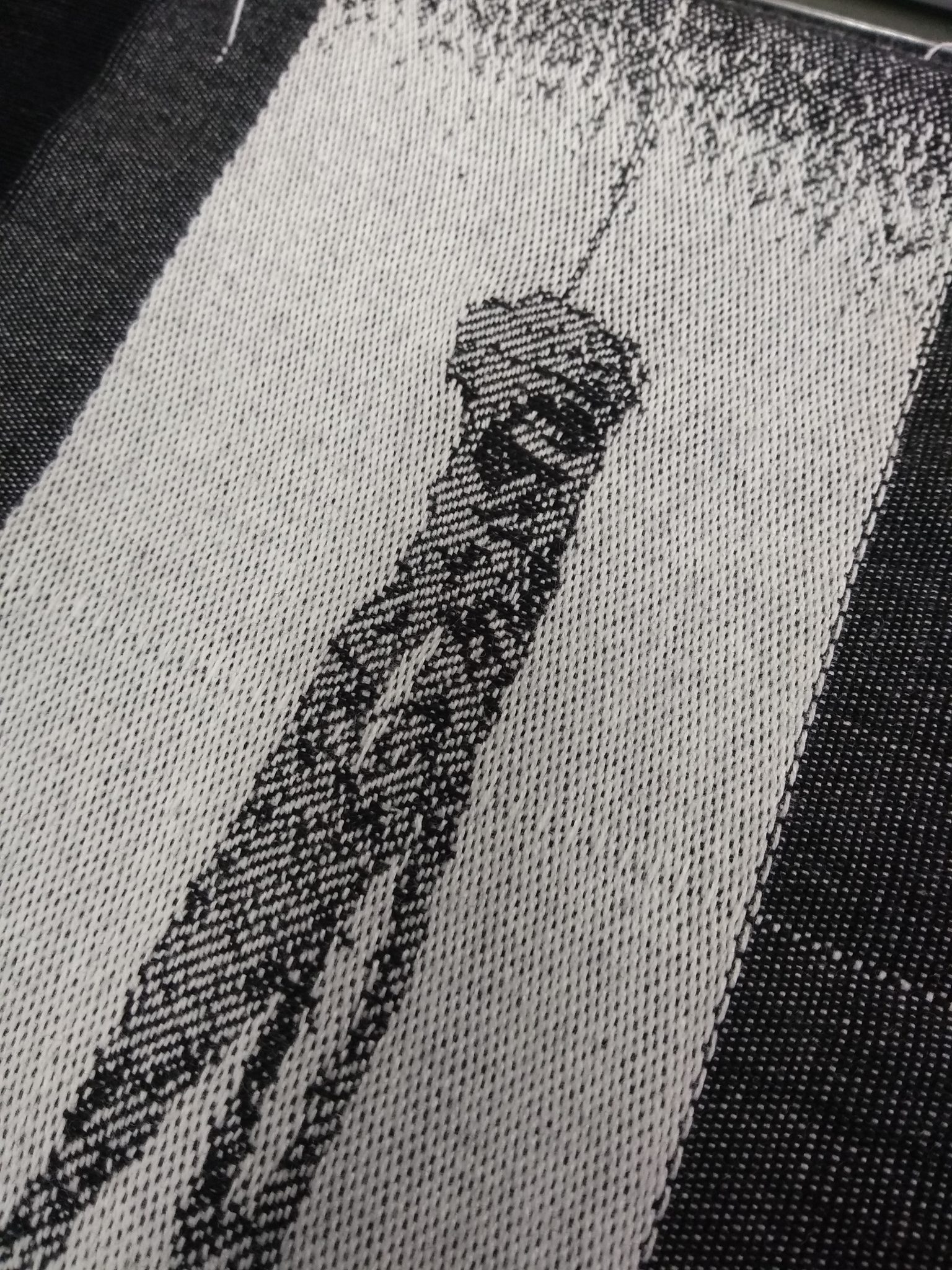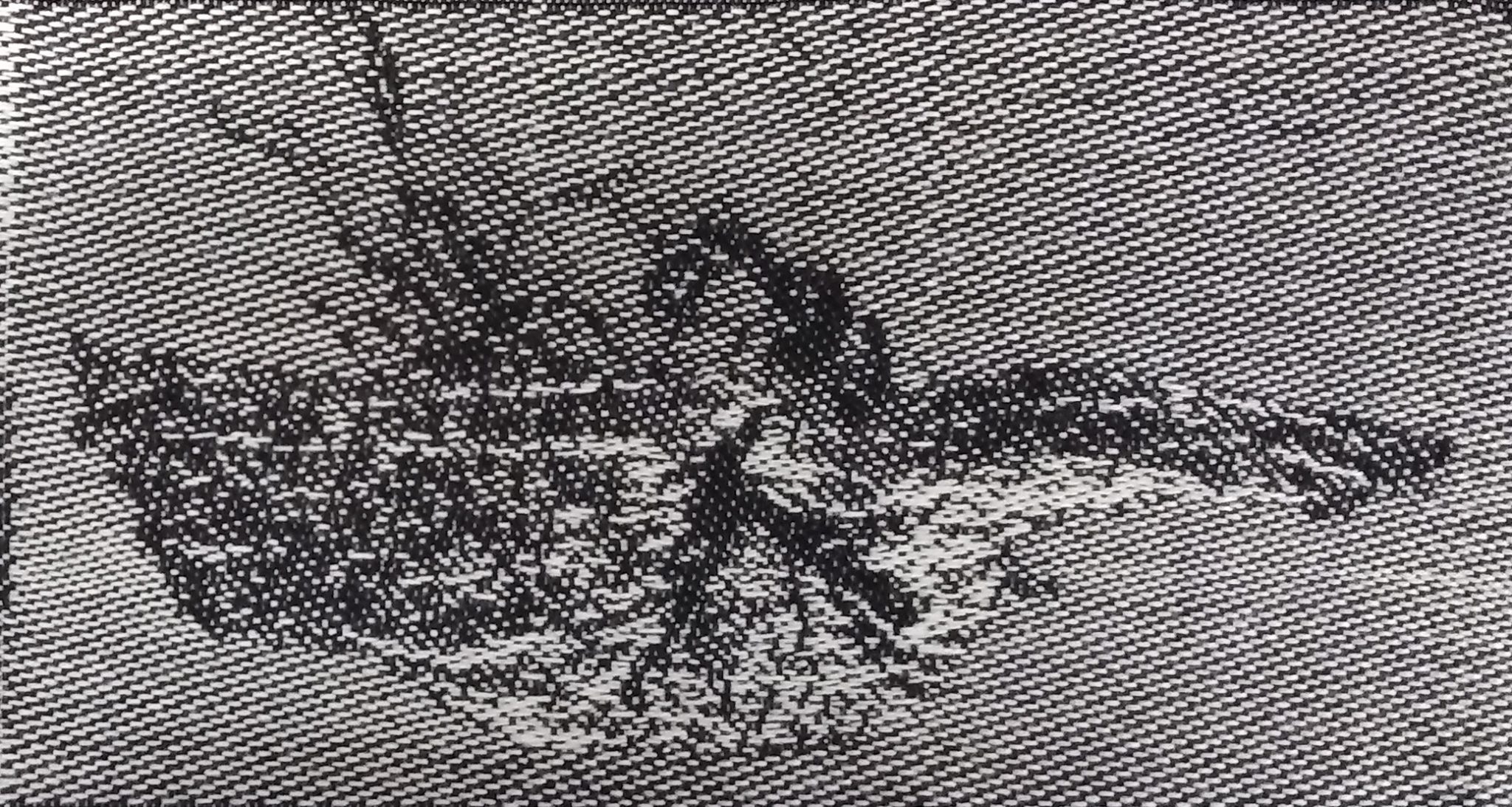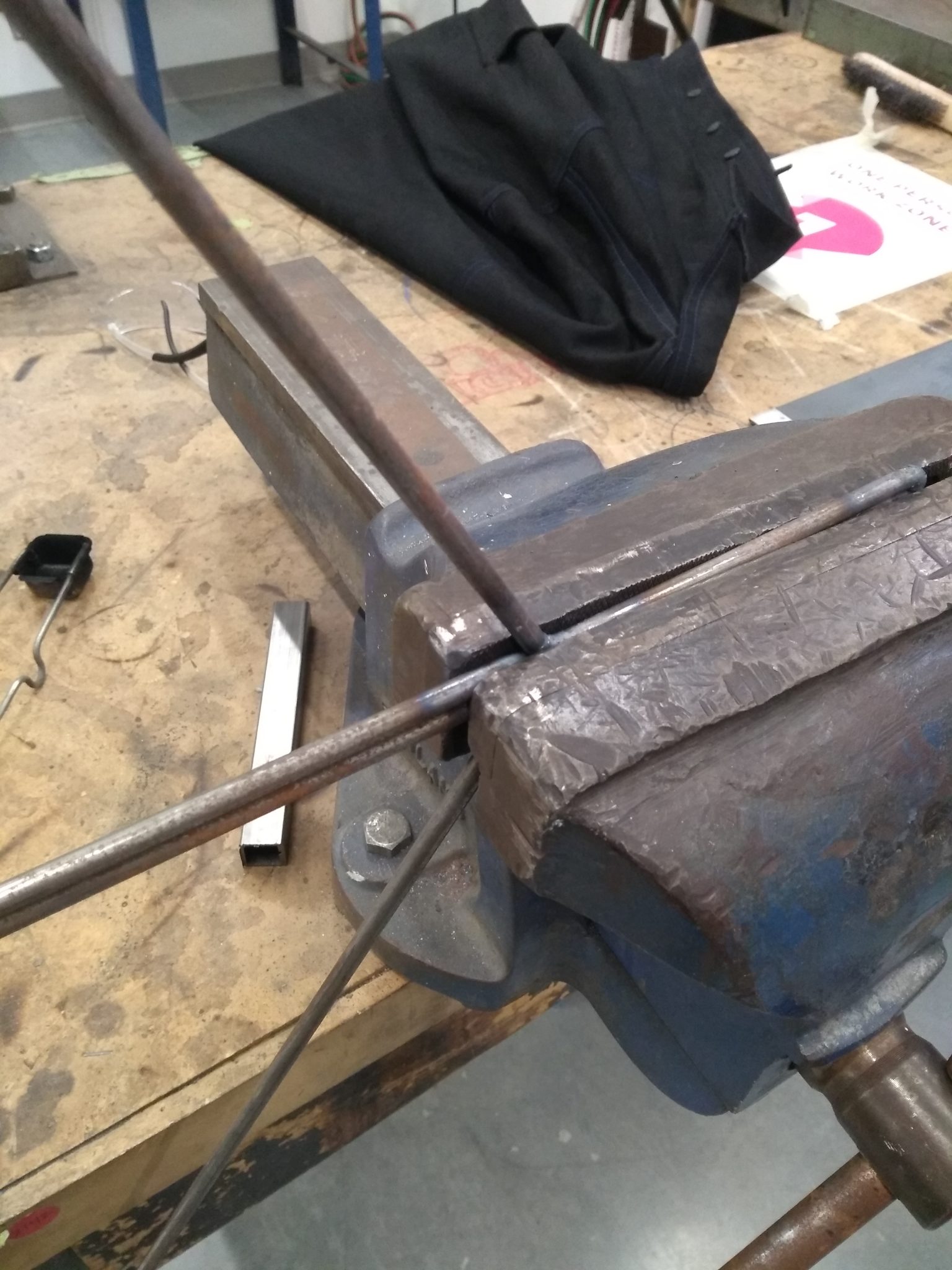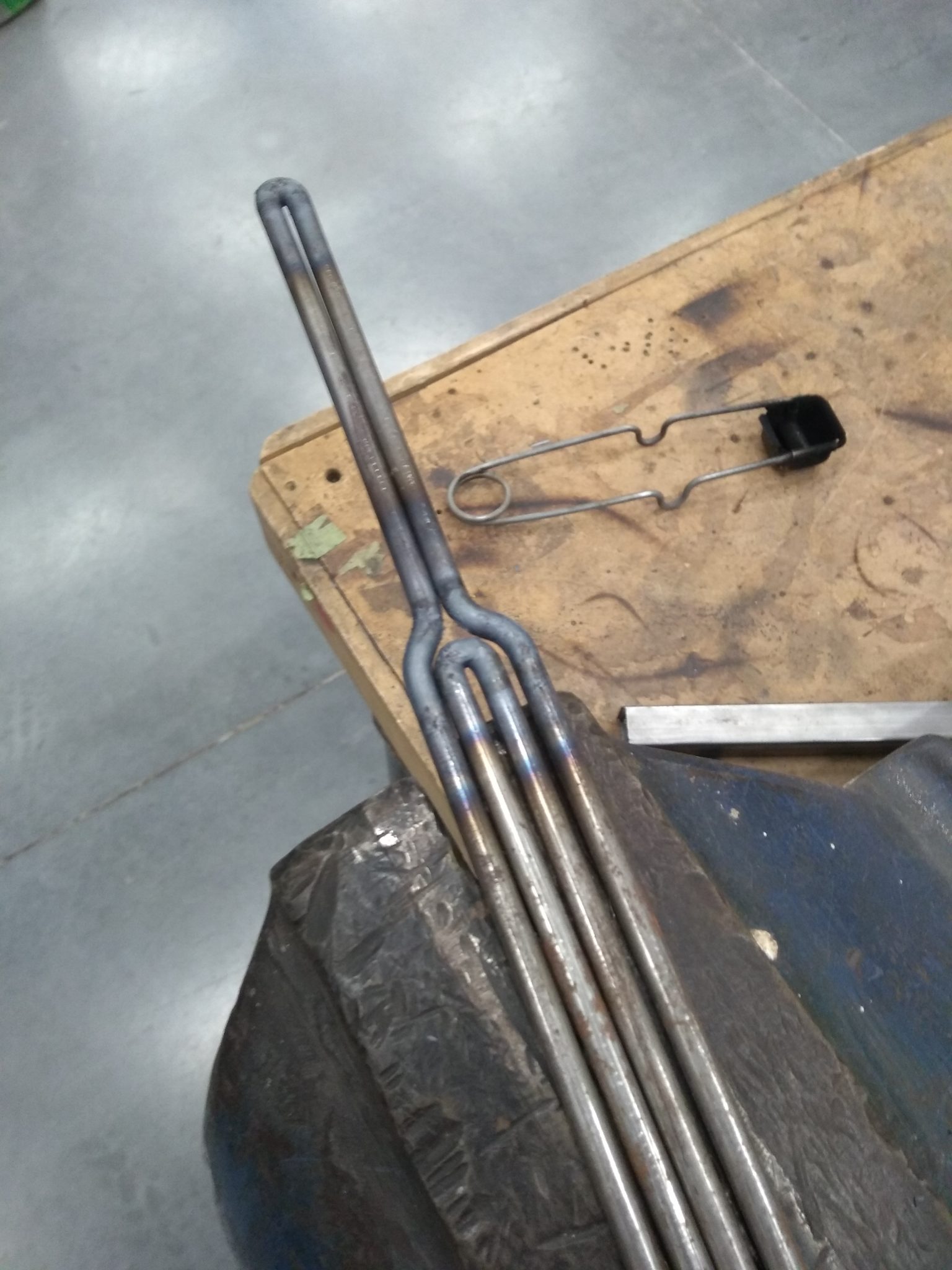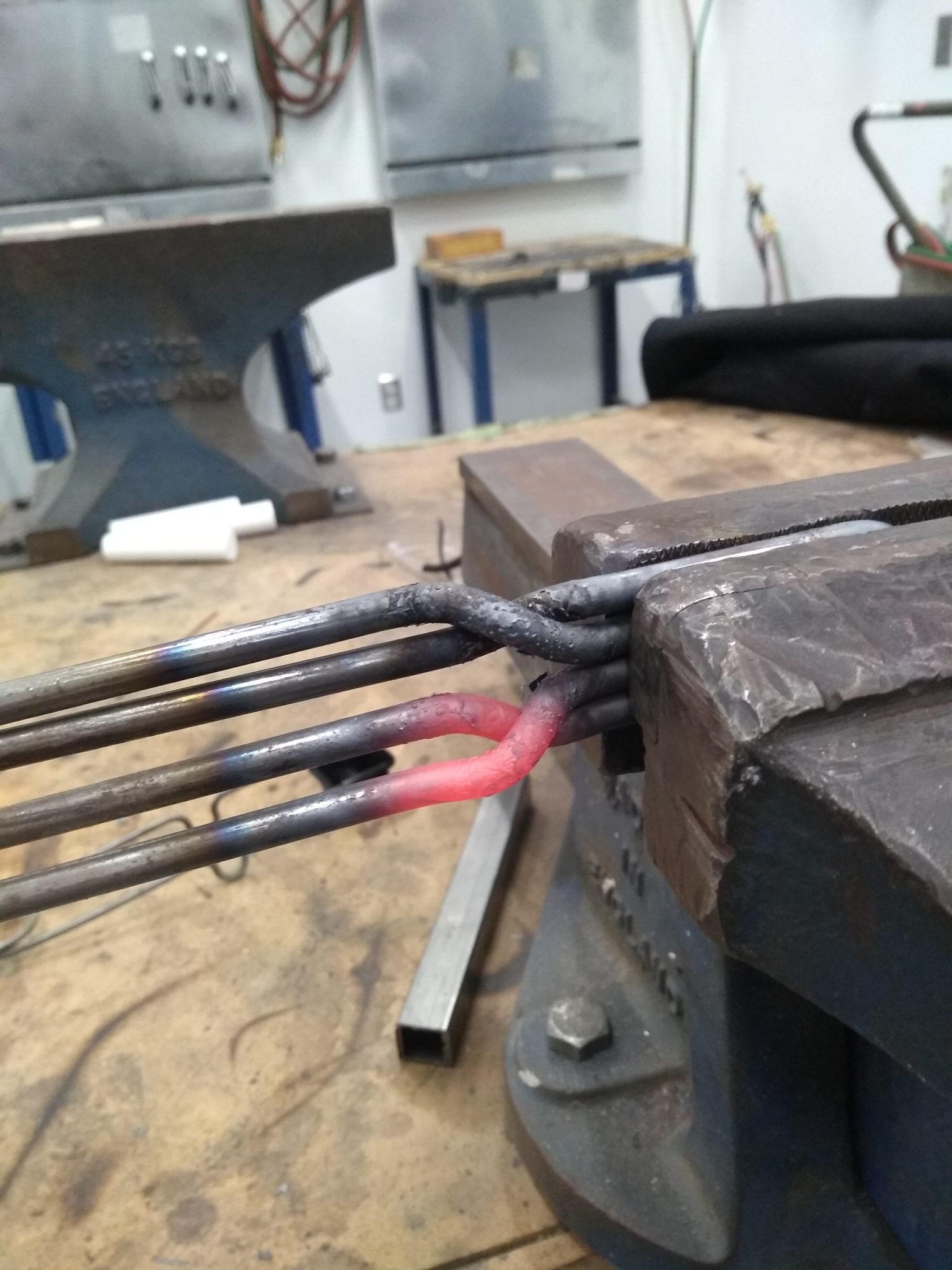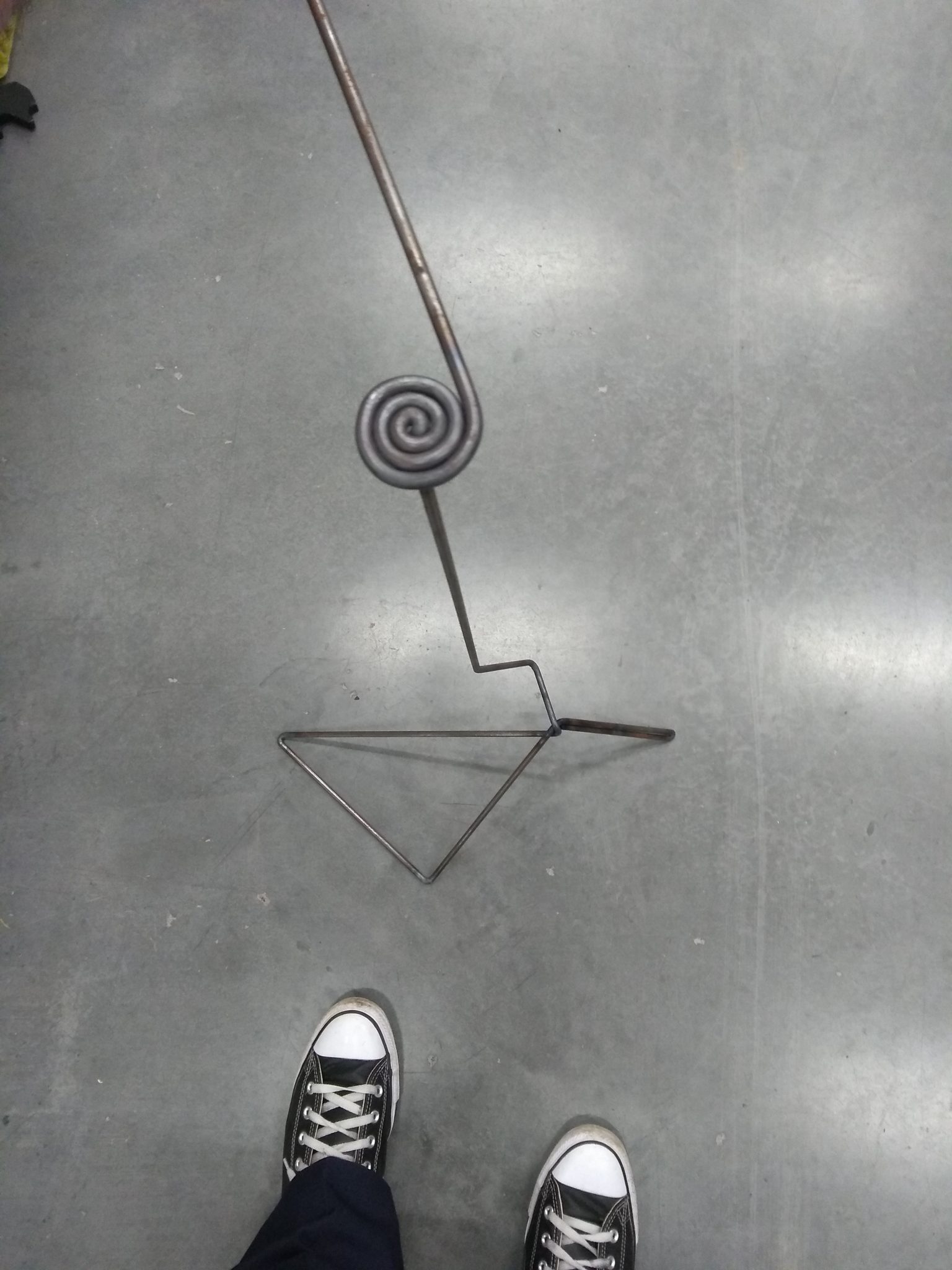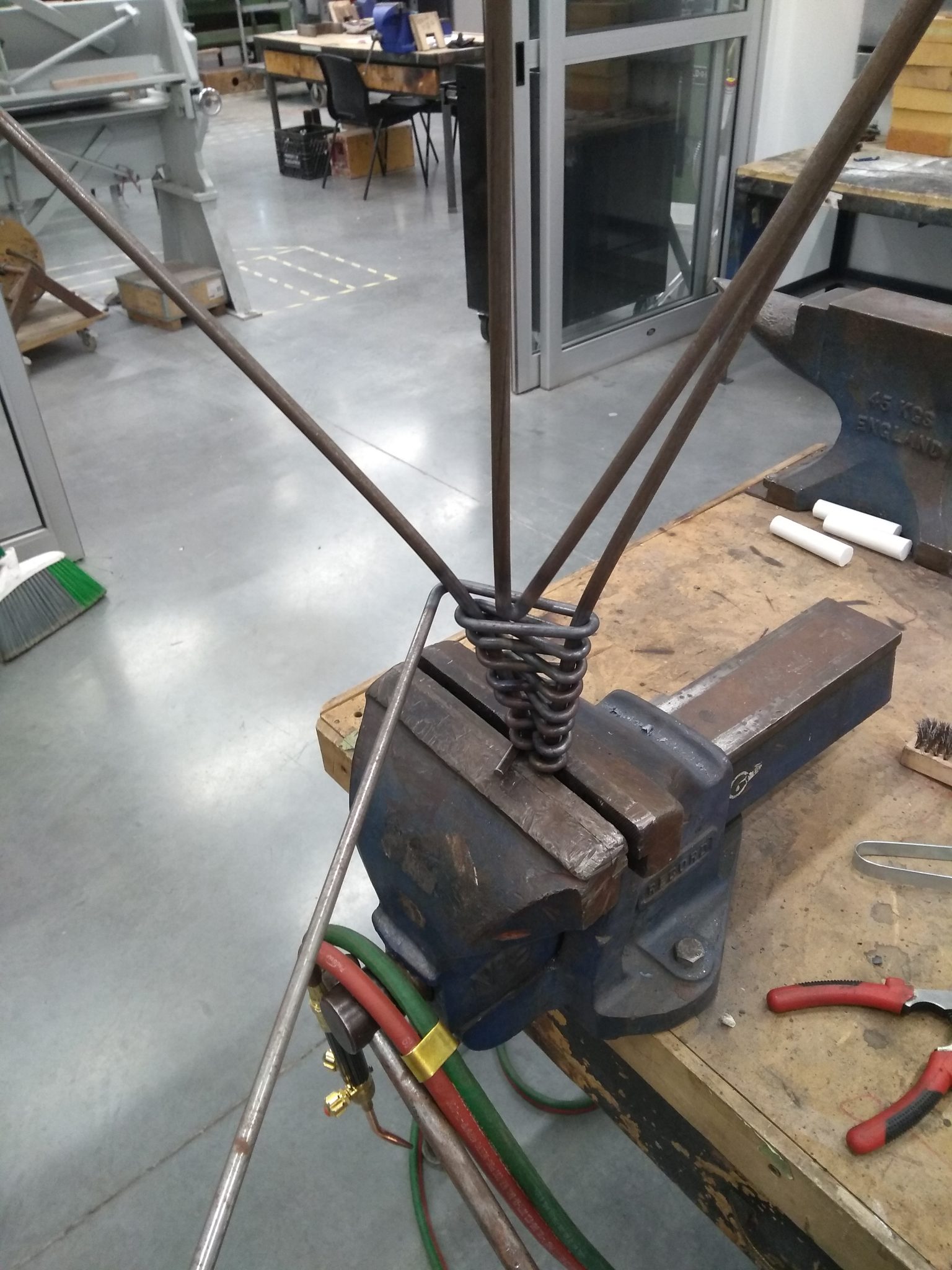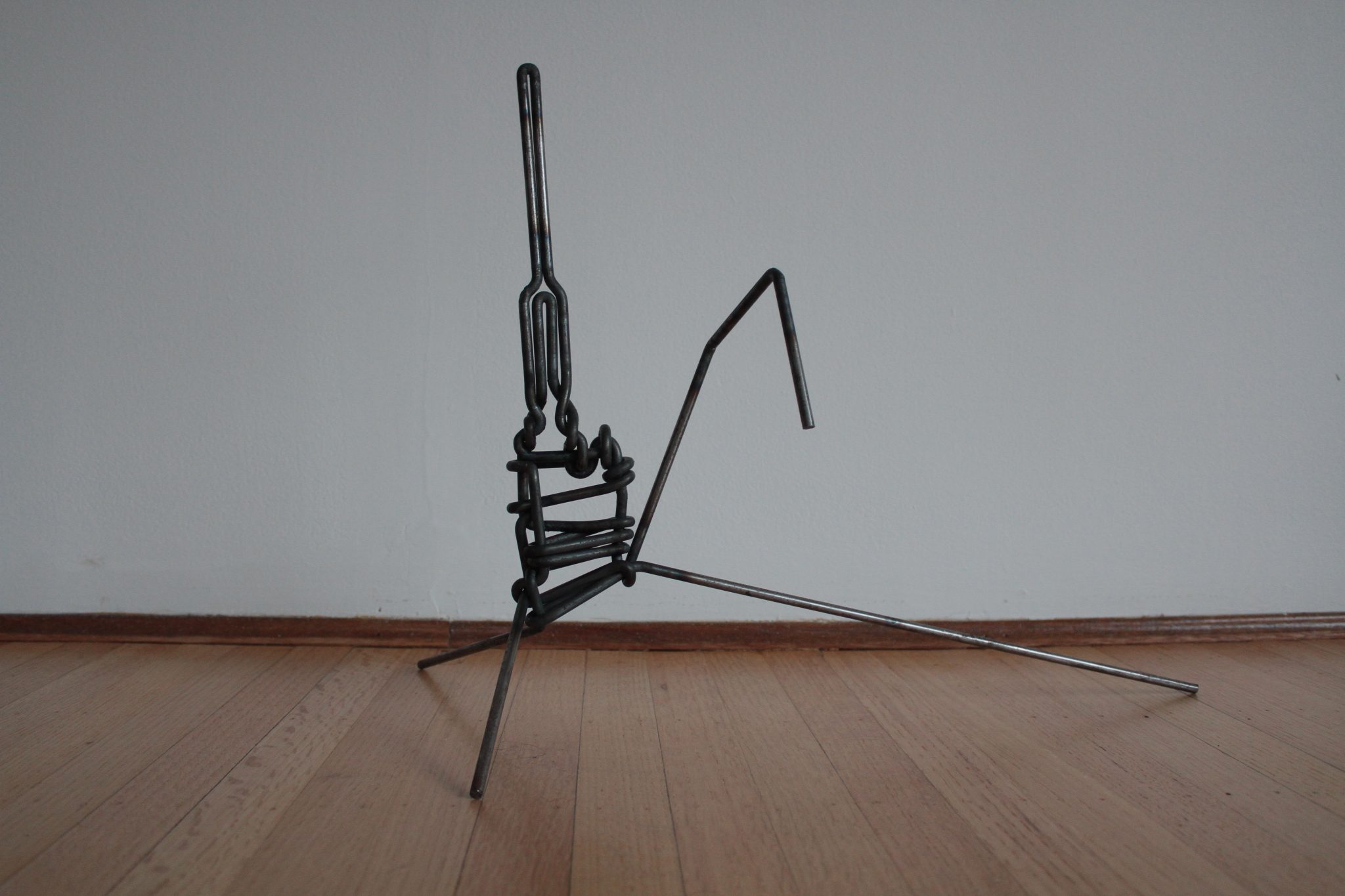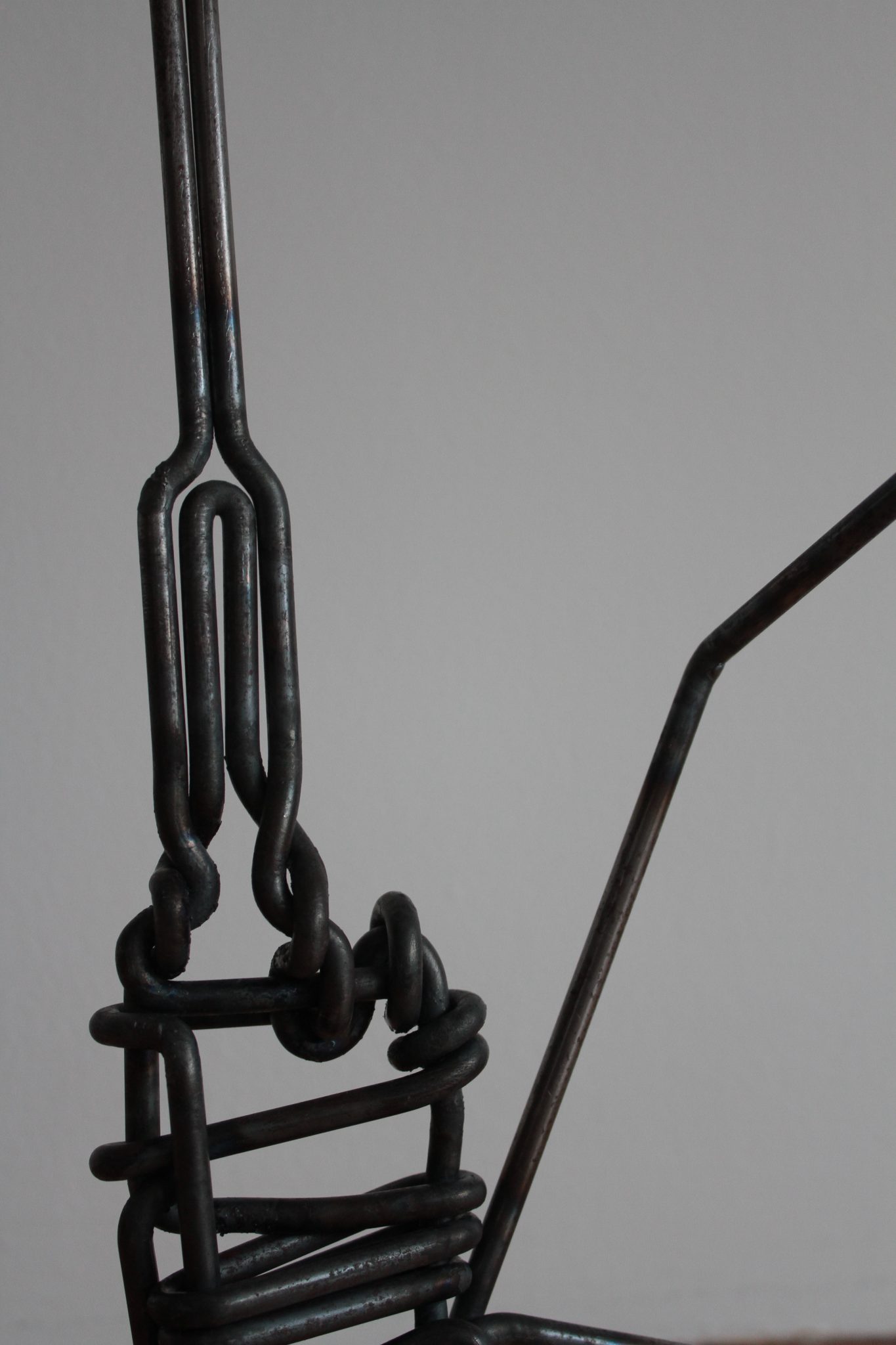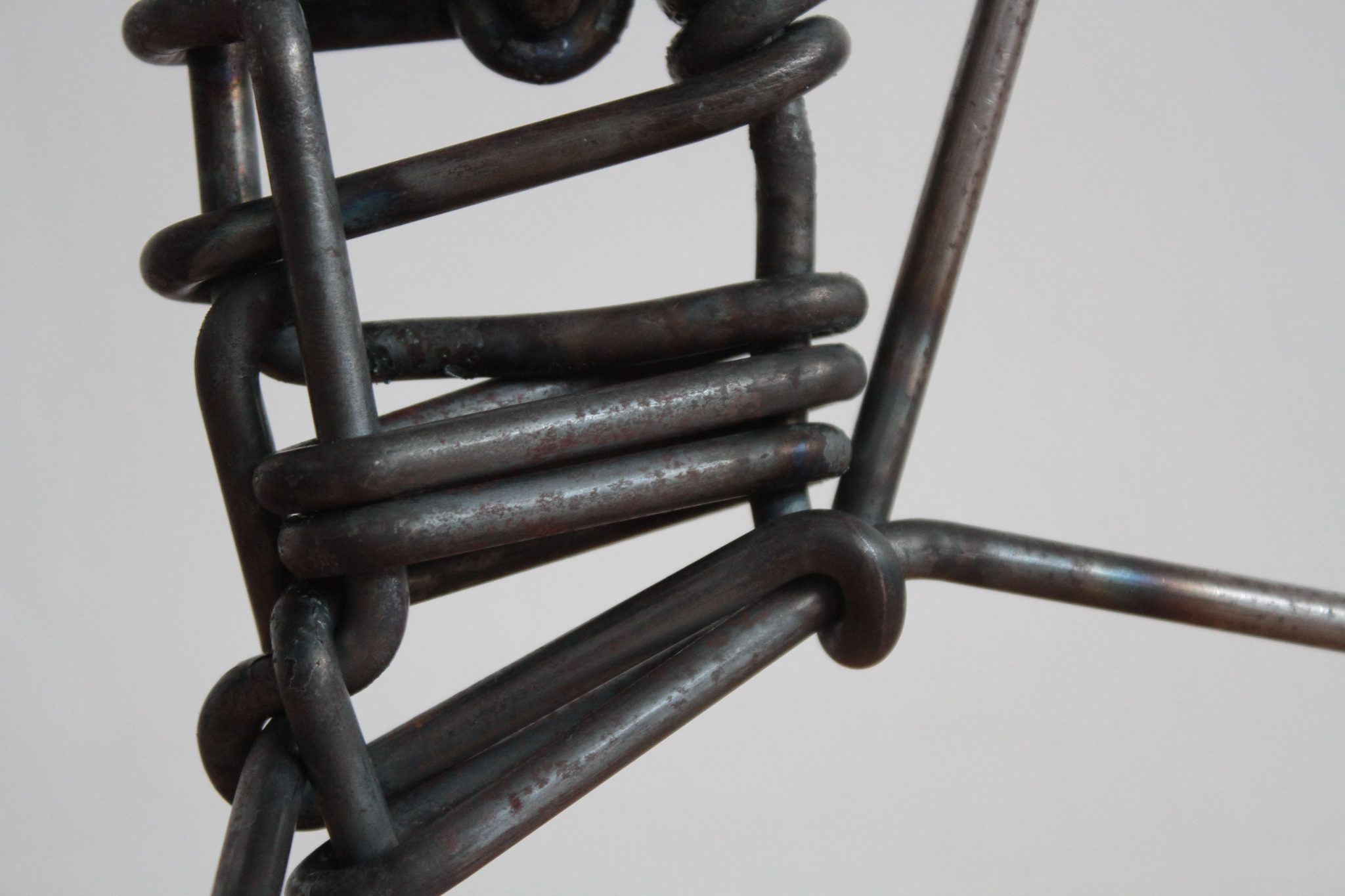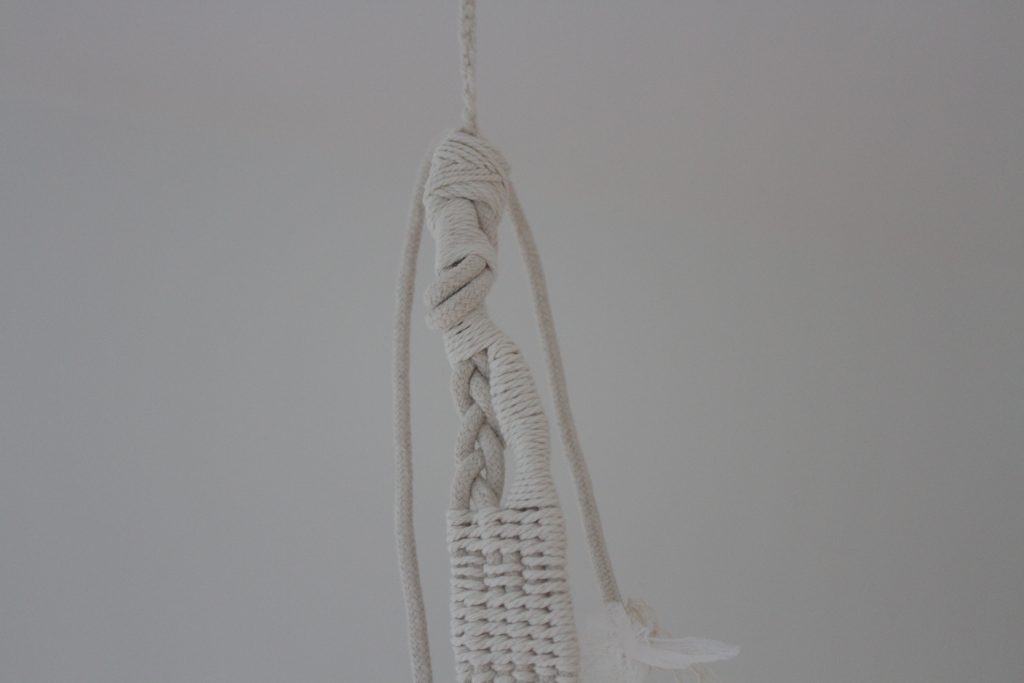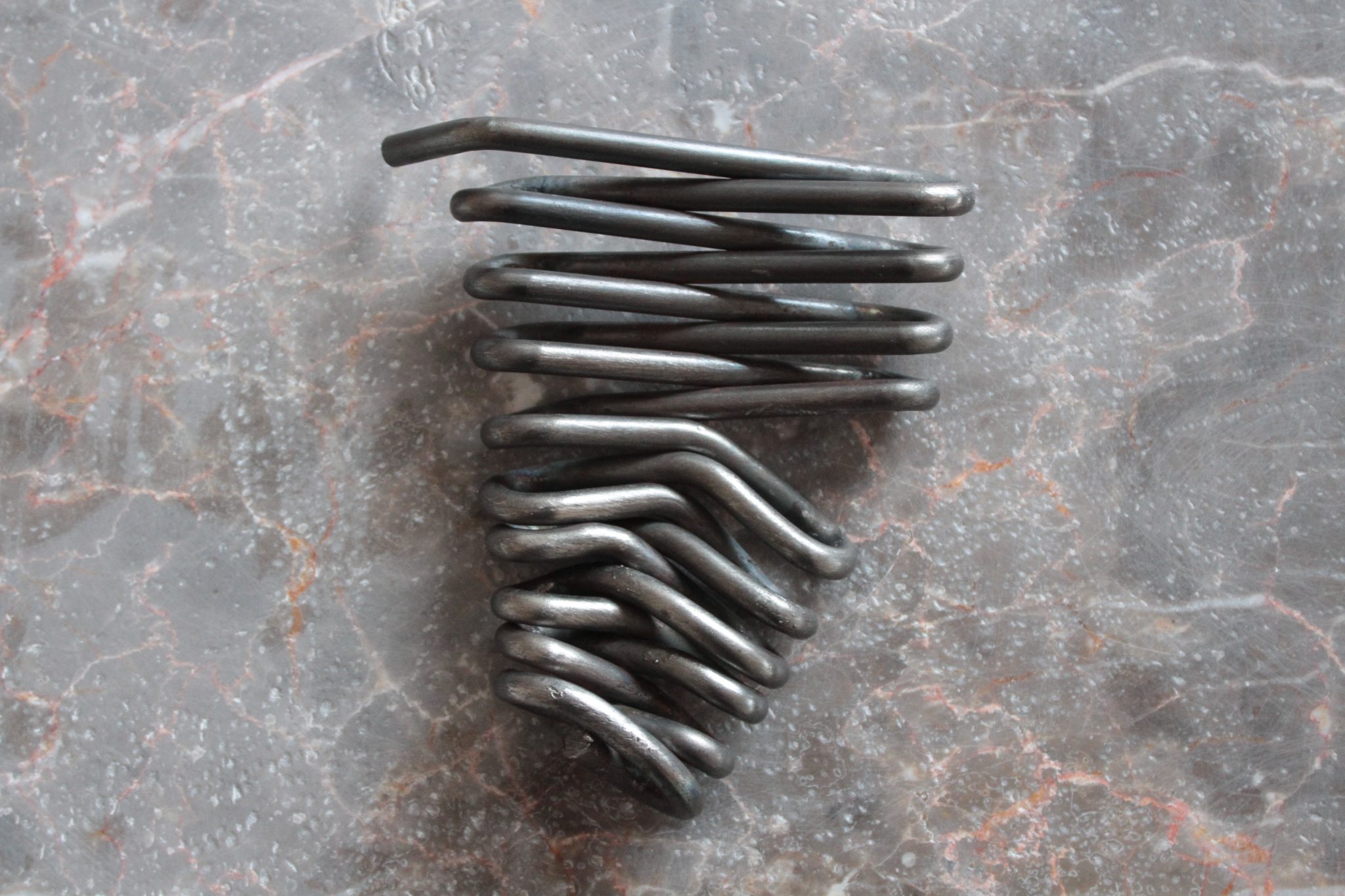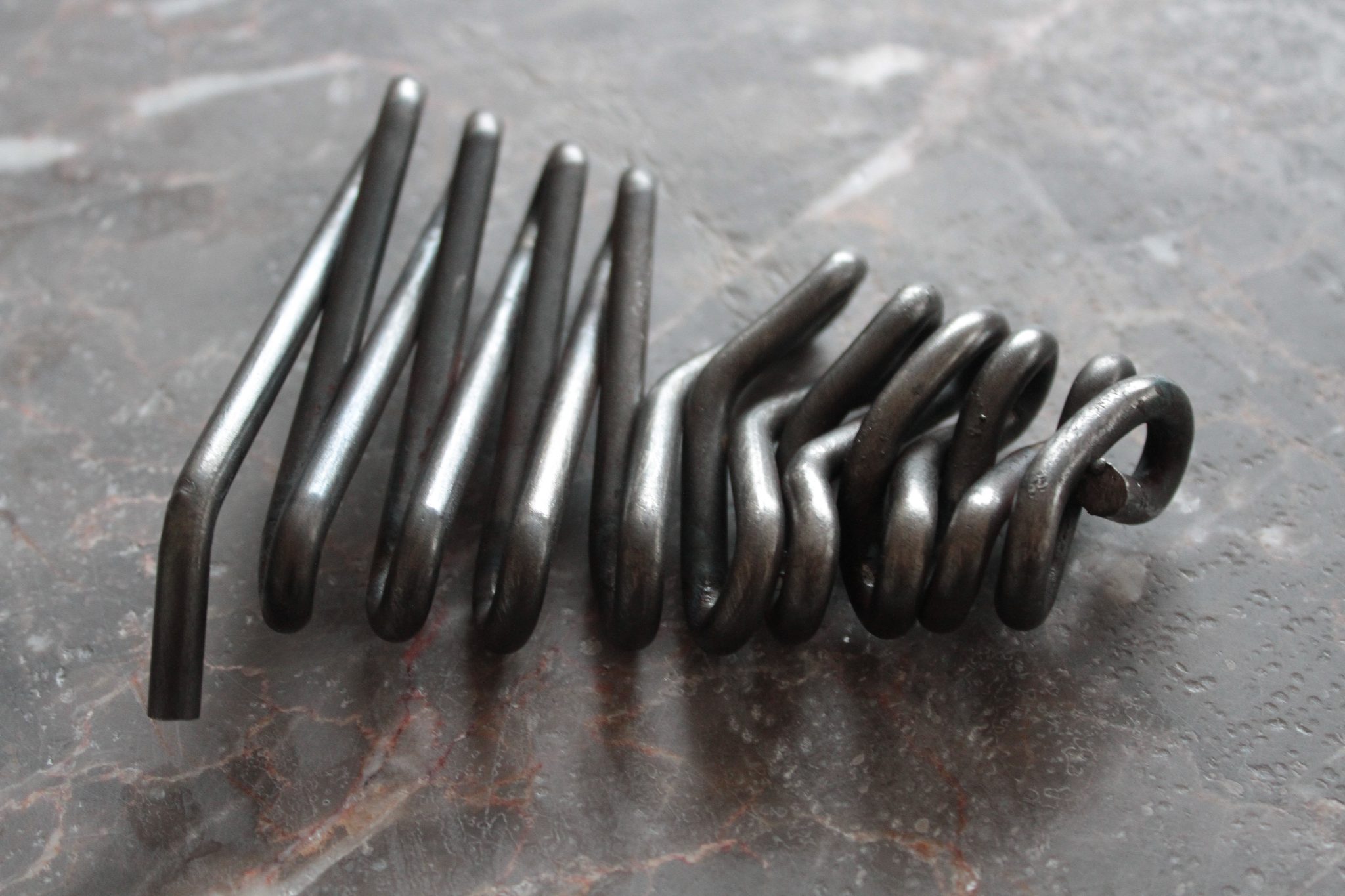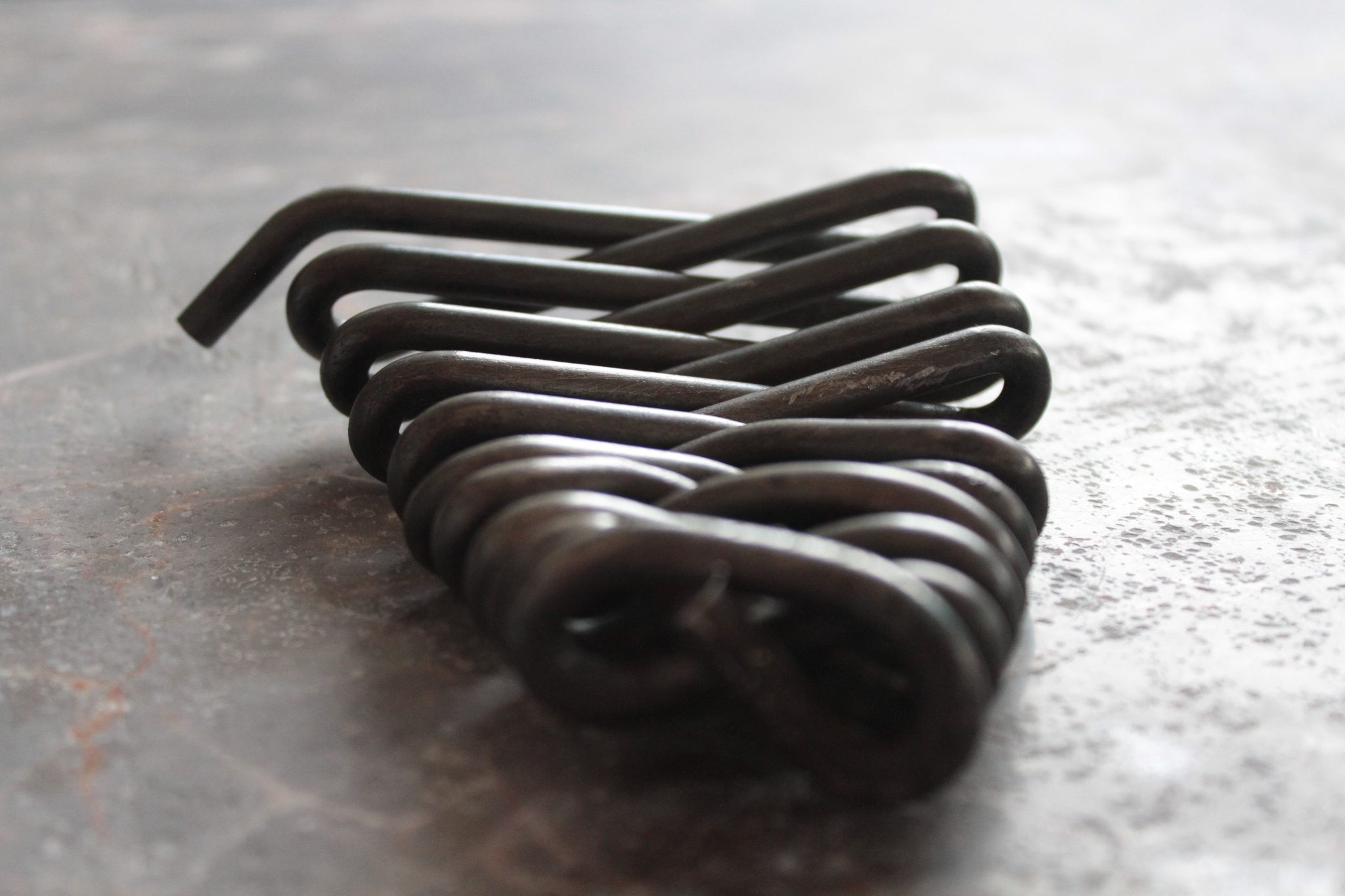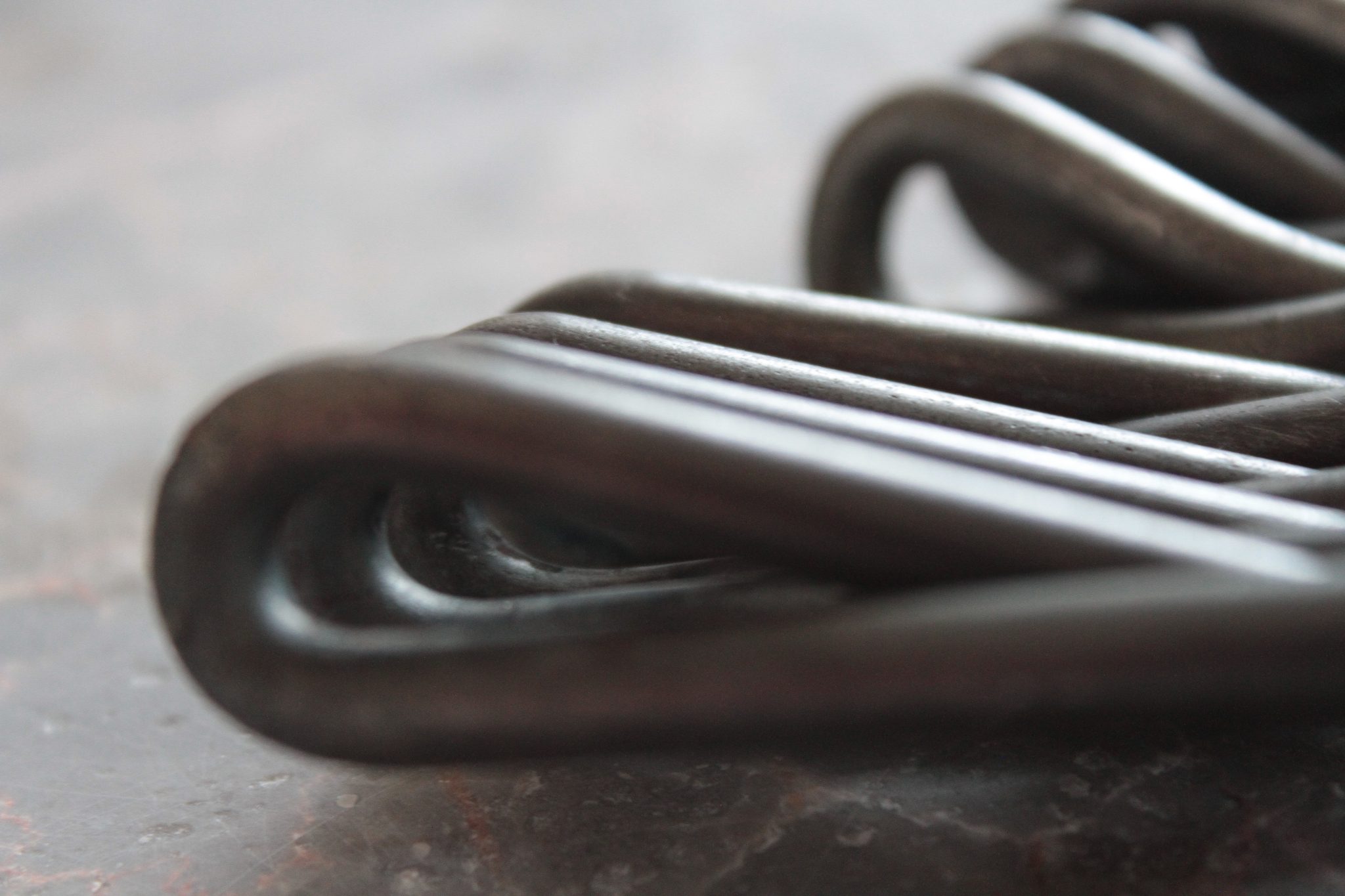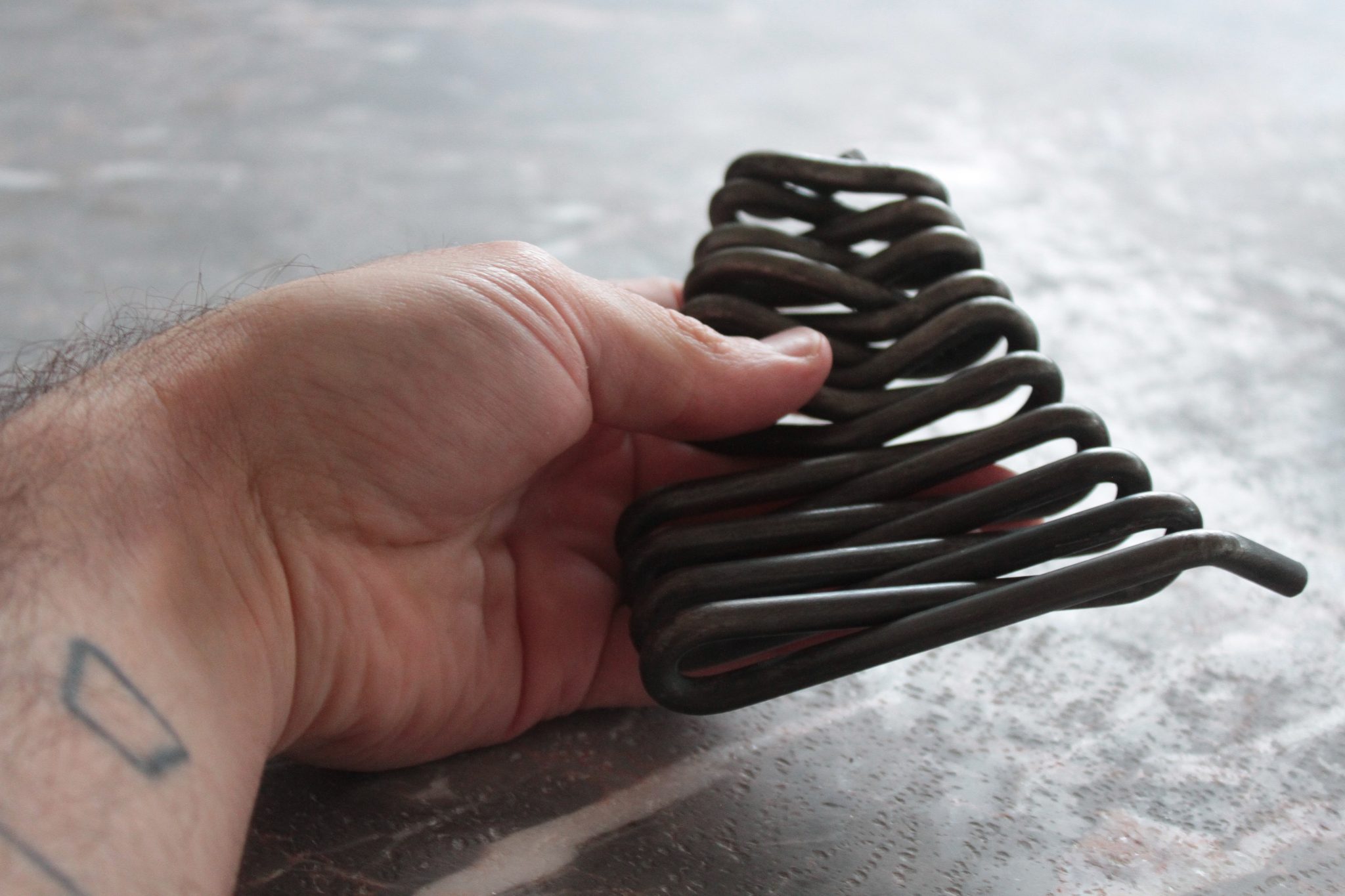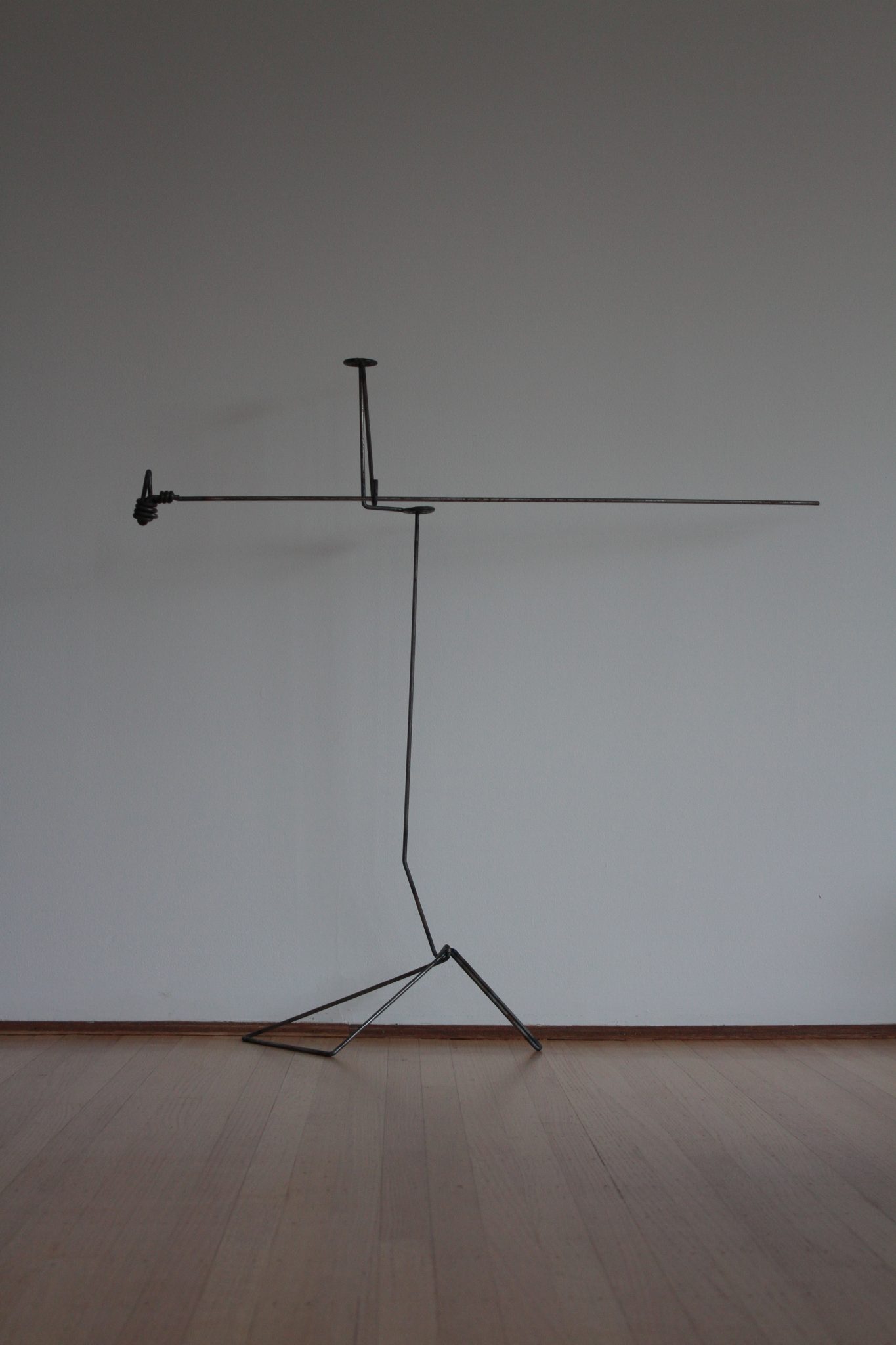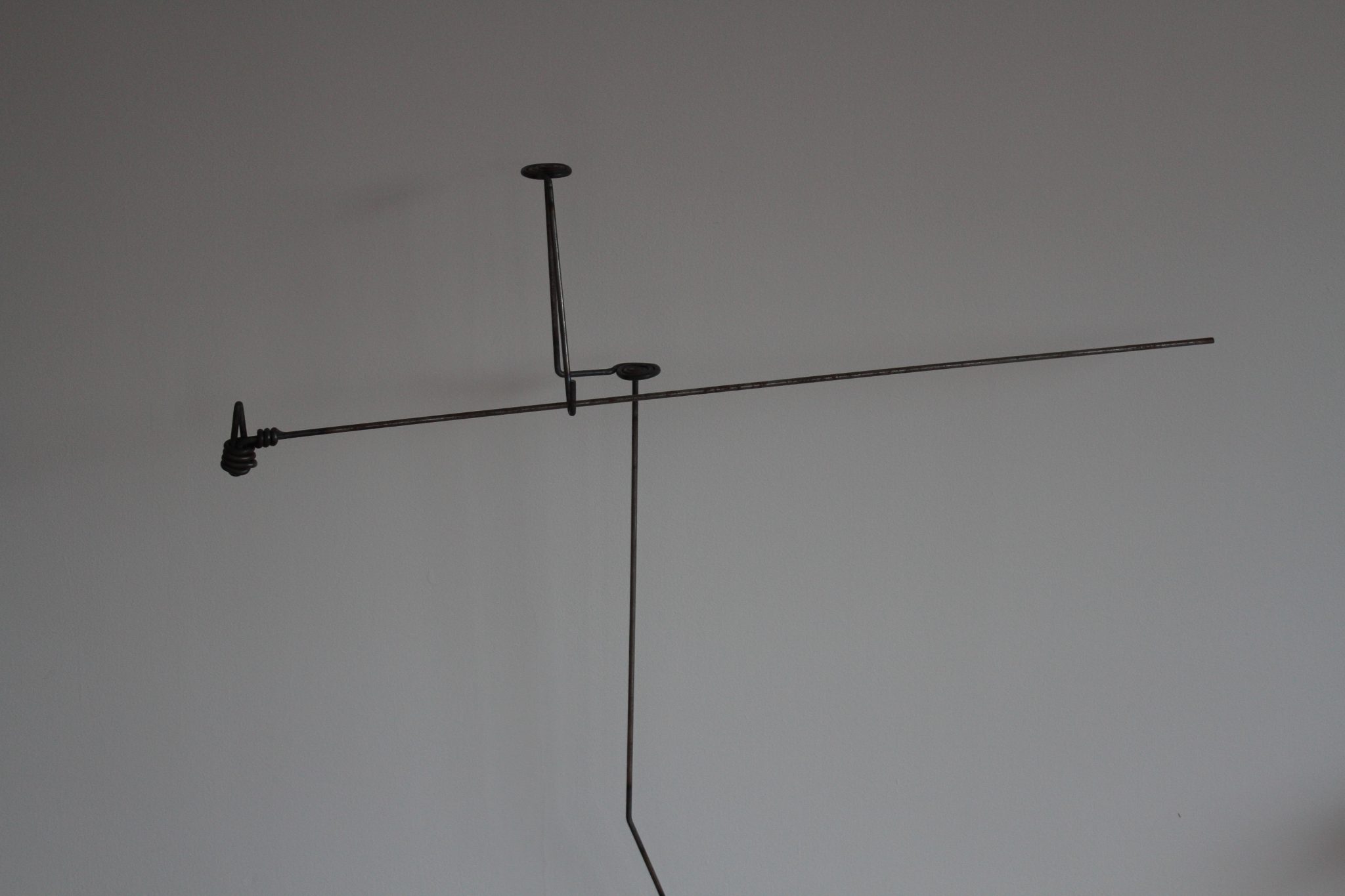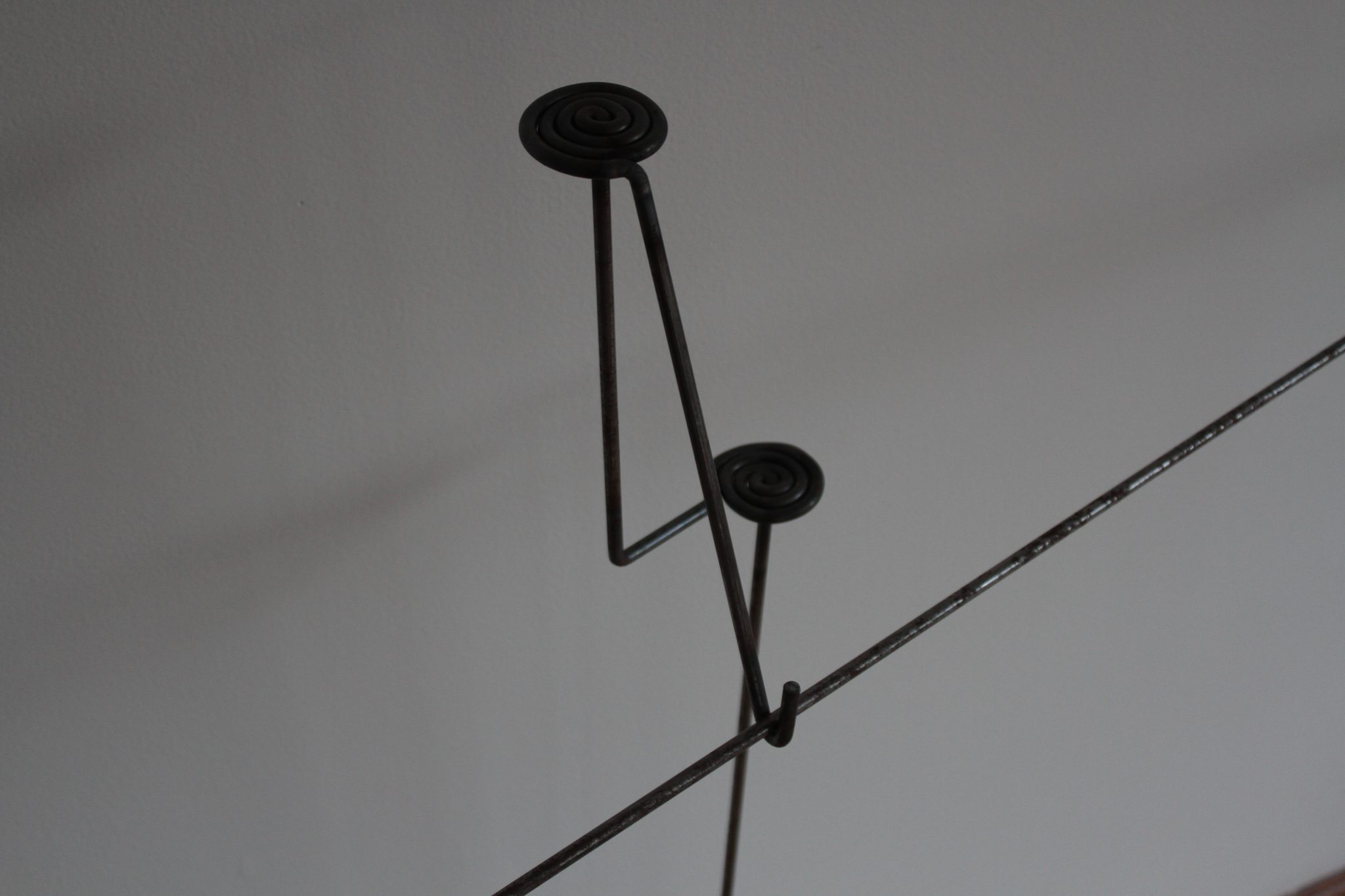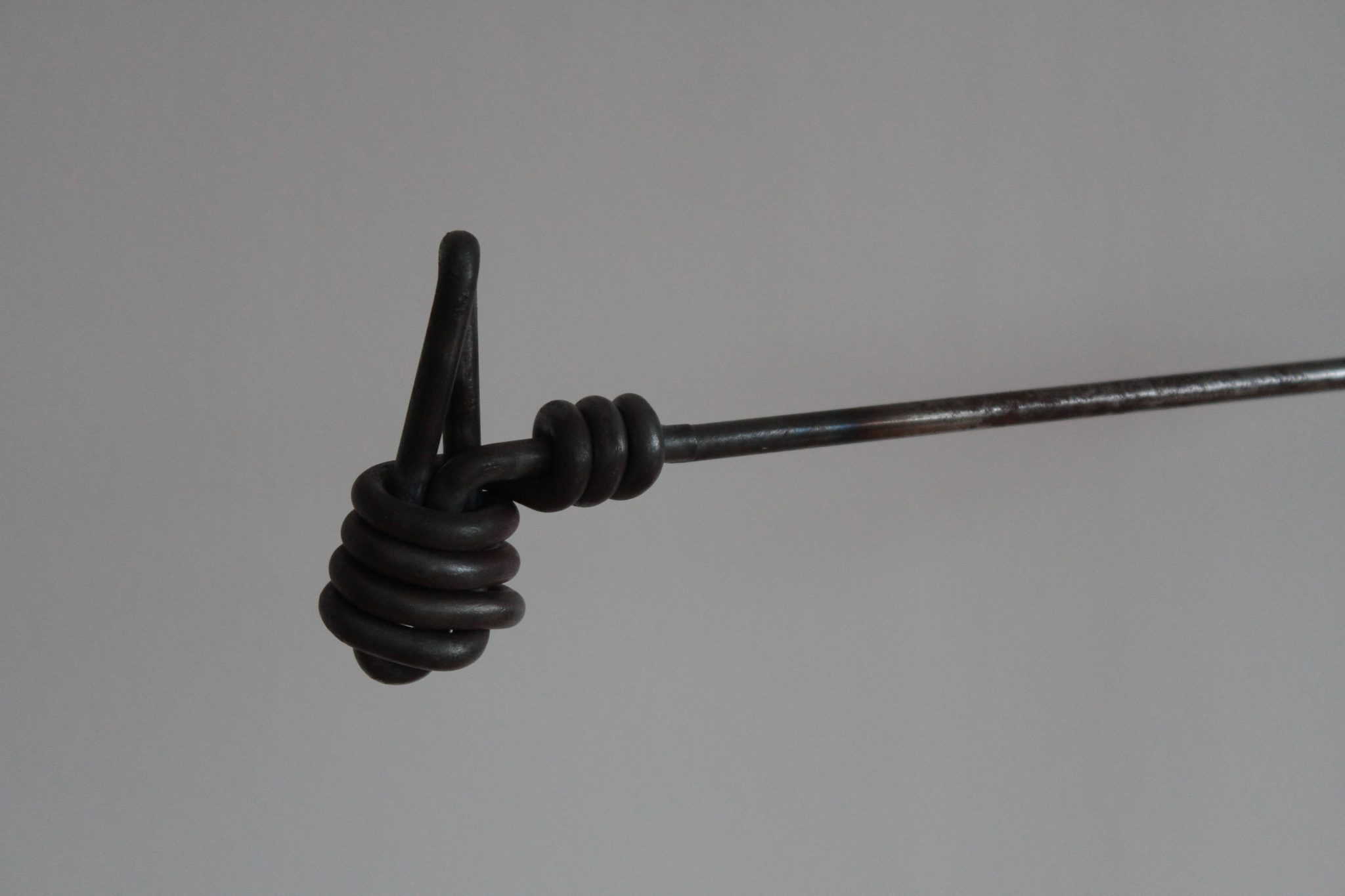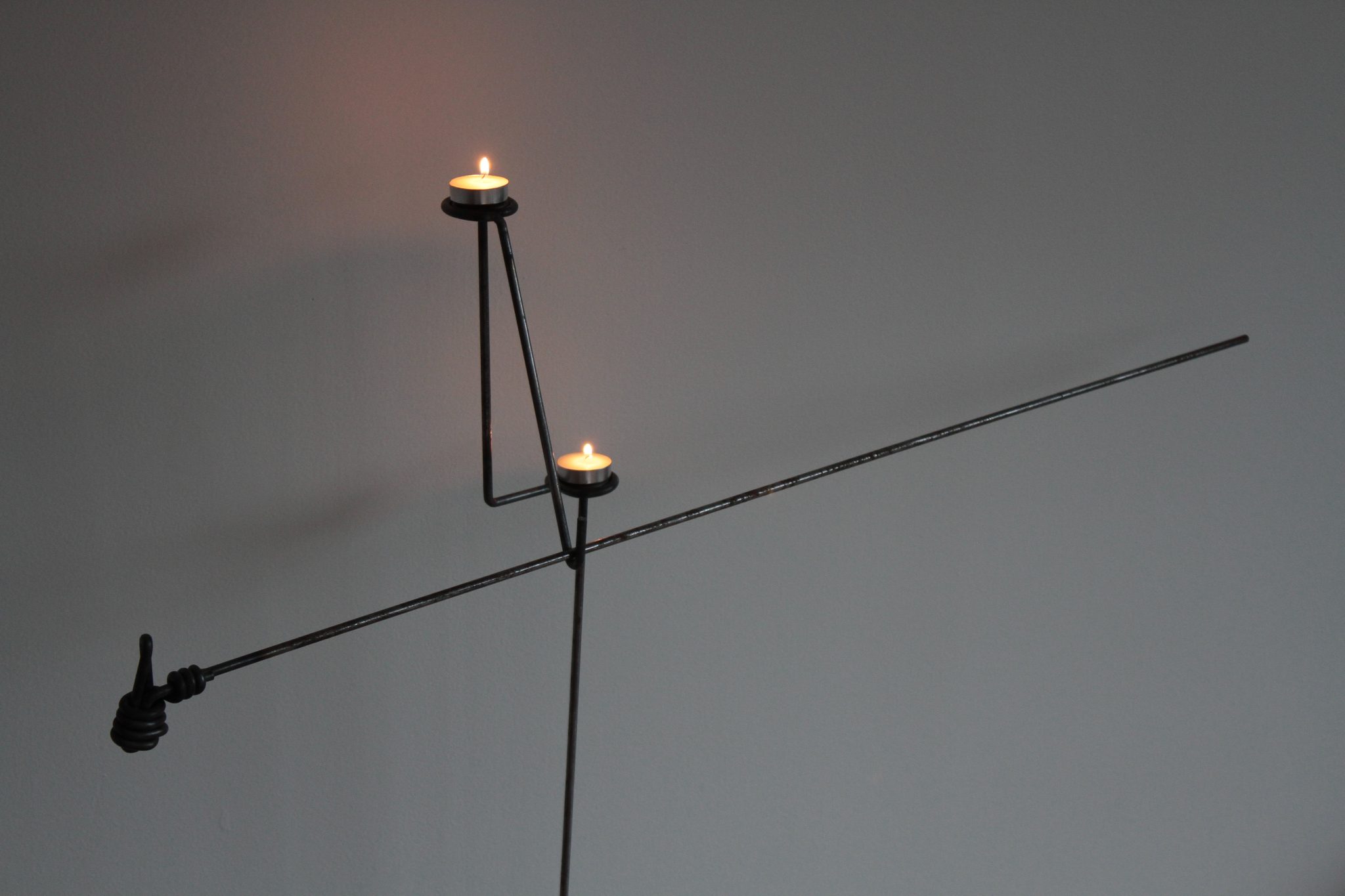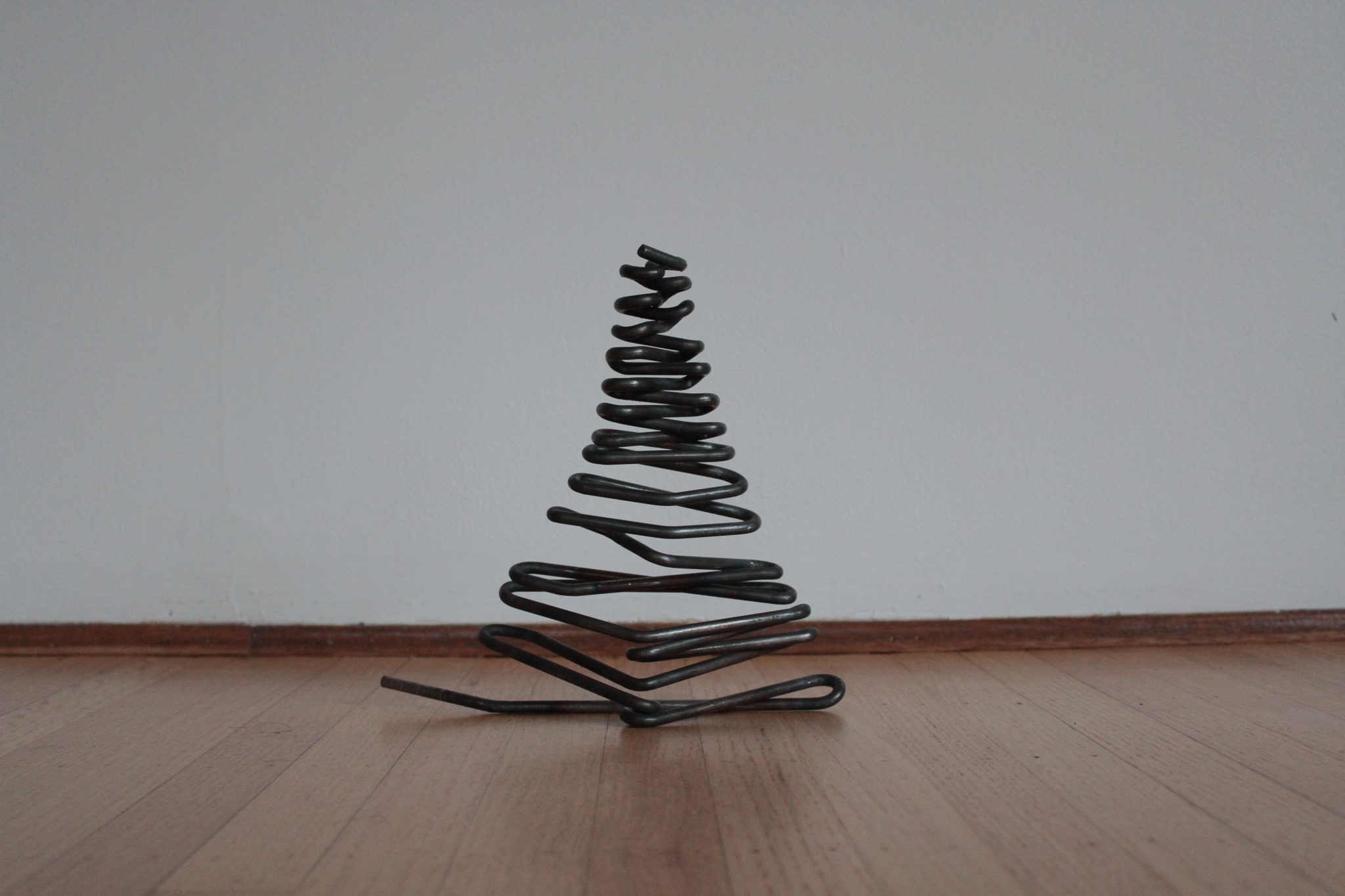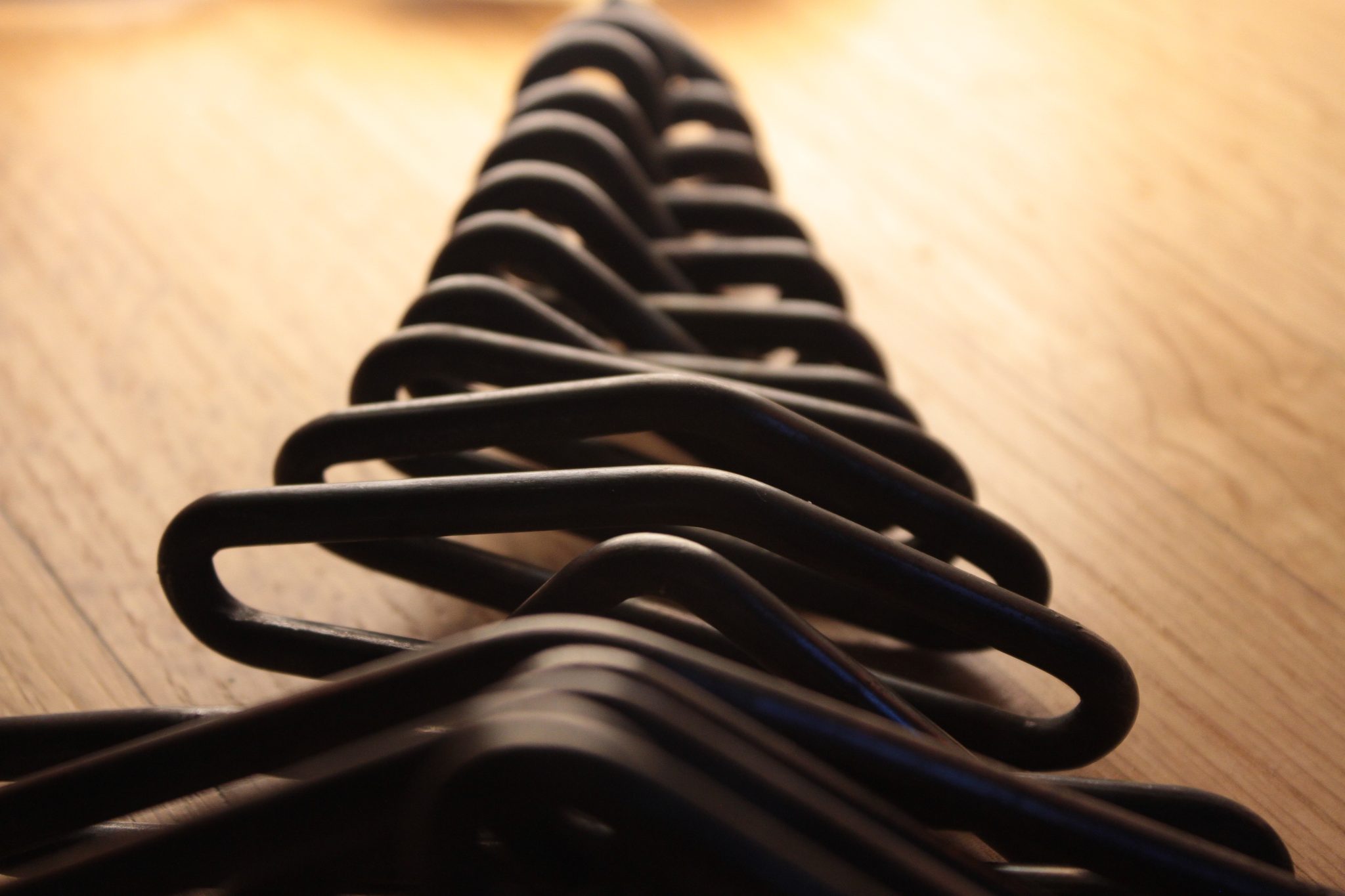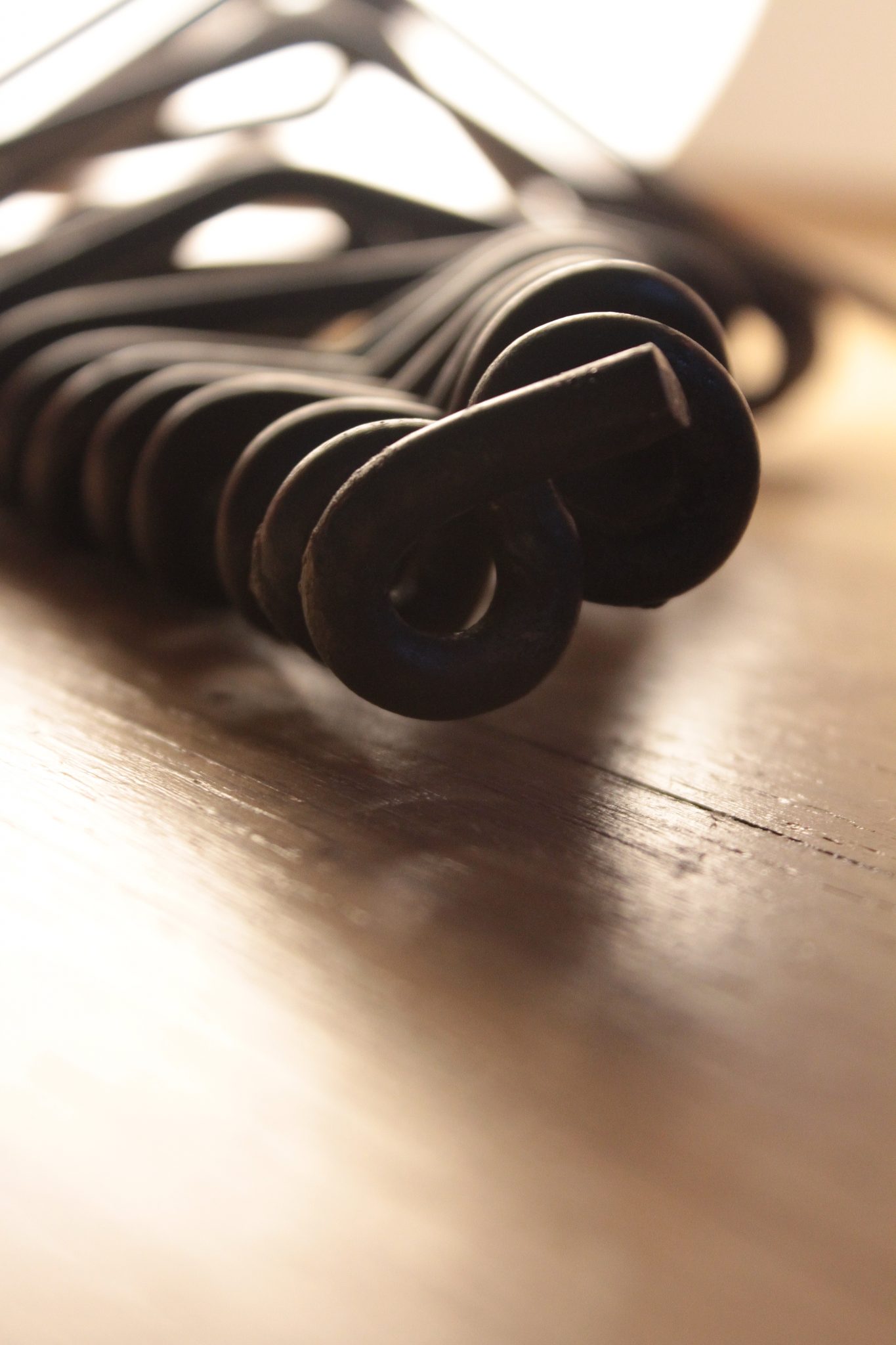The project and
the bigger context
This project meant for me at the same time both continuity and changes; it helped me to crystallize some ideas and methods, and it helped me outline the approach for my research (at least for the summer term). This project also worked as the link for getting to work in shops back again, serving as a vehicle for exploring new machinery and new ways of making and identifying new possibilities that come with those.
Overall, my work in Studio II was deeply related to the personal process of settling in Vancouver and trying to identify the current characteristics and potentialities of my practice. Project #1 looked for a possible way of crafting things at home and engaging with weaving-like work; Project #2 explored alternative but related ways of reinterpreting the outcome of #1; this project consisted in making objects related to the previous ones, but using the shops at school and further expanding the possibilities for exploring ideas in common.
New settings,
same old themes
For this assignment, I worked in two shops: the Tarp lab and the Metal Shop. In the former, I worked with the TC2: a digitally-controlled Jacquard loom, and in the latter, I worked with ¼” steel rod for exploring hot bending. The theme for these explorations remained, in essence, the same: lines crossing over and under, wrapping around, bending and pulling, and simple materiality. Using the same theme and kinds of objects as a creative catalyzer, allowed me to maintain the focus on the material and technique aspects and compare these experiences in contrast to the previous ones.
Physicality
The kind of tasks I engaged with for this project required a higher level of physicality than with the previous two projects. Both with the TC2 and the steel rods, the range of movement naturally became quite bigger by involving all the body and making the feeling of working rhythm and patterns more noticeable.
Approach to detail
I found an interesting contrast between the approach to detail in these two projects based on how these were conceived. In the woven pieces, the details sit mainly in the design stage and things like paying attention to the transitions between patterns and being thorough on the pixel level but not as much in the making process as the work is partly automatic and repeatable -and it’s even possible to undo and go backwards-. In the case of the steel objects, on the other hand, even though these might not be as complex as the former, the detail resides purely in the making process in interaction with the material; being mindful not to overheat, to heat in the right spot, not to force the bending excessively, etc.
Weaving with the TC2
Feedback:
Studio+Research Assistantship
Weaving with the TC2 Jacquard loom was a great experience that gave me many things to reflect on. Because of being part of the ECUAD/Material Matters research team in the Craft And The Digital Turn project, lately I’ve been paying more attention and reflection on how the digital may partake in craft practices. Luckily enough, by the time I decided to use the TC2, a few months into the CDT project had gone by and I was more receptive/prepared to observe things under this particular lens.
I used the machine twice, 3 hours each time, and I wove around 730 rows of weft across 1760 warp threads. Besides the quite amazing fact that the TC2 lets you weave pretty smoothly super intricate thread combinations and patterns -as intricate as you might be able to make them-, the machine still offers plenty of room for the user to interact and leave their imprint. Even though the weaving pattern is digitally generated and controlled following black-white pixels combinations, the user still has to do a big part of the work physically:
Keeping up the pace
Shuttle in hand, ready to slide
Confident pushing from left to right.
Shuttle aside, you tense the thread.
Pull hard the handle for pressing the weft.
Stomp on the pedal for moving the warp.
Push the bar back, shuttle in hand
Start on the right, end on the left.
Pull, stomp and push; start all over again.
That sequence, along with the sounds the components made in between each movement, became at some point quite rhythmic and served as a a way of observing my progress by hearing my work and paying attention to speed and periodicity in the repetitions. In a way, keeping the rhythm also became a little goal to achieve in addition to getting the technical aspects covered, and it made the experience even more entertaining and challenging.
The experience
with the digital
For working with the TC2, I had to posterize the images of the objects from projects 1 and 2 after setting the resolution to 60 dpi -which is the equivalent in pixels to the thread density that the loom offers-, and which is a lower resolution than what I would usually use. Interestingly, to work with the TC2, I had to use a fancy piece of software such as Photoshop in an almost counterintuitive way: thinking lo-fi and being able to observe and highlight the pixels rather than trying to hide them. It reminded me of using Microsoft Paint as a kid and training pixel-level mouse skills in plain black and white drawings.
But even more interesting was, of course, observing those pixels turning into threads going over and under and revealing those intricate patterns in just about some minutes. All that happened while I was only focusing on getting my technique right and my rhythm being steady.
Steel and a blow torch
Different shops,
different approaches
The design approaches and expectations set for my work in the Soft Shop and the Metal Shop were very different. On the one hand, with the TC2, the textiles were reproductions of images I had already composed: the textile pieces were expected to look as I had previously imagined and determined; the opposite would indicate that something didn’t go that well. For the exploration with steel, on the other hand, the idea was to get into the shop -and getting to know the place and tools-, and trying to replicate some aspects of the objects from #1 and #2. In essence, the idea was the same as many times before this term: simply starting to engage with something new (in this case, hot bending steel) and trying to replicate some particular movements; the objects would be the outcome of my exploration with the material and the tools.
The steel objects
As part of the bending explorations, I did five objects:
– Steel #1: the first one started by trying to reproduce some bending and braiding situations in the final object of project #1.
– Steel #2: I wanted to make a more elongated and less contorted figure that may offer some kind of support for light-weighted objects such as candles.
– Steel #3: started by bending and wrapping the rod from one of the ends for making a stand-alone object. The difference in weight between both ends made it interesting for balancing so since I had Steel #2 as a structure for supporting things, I bent its upper end so that #3 could balance on it.
– Steel #4: consisted of trying to replicate the wrap-around technique with this heavier, thicker steel rod. It was a good exercise for tight bends in tight spaces. The reference object here wasn’t from project #1 or #2, but instead, it was the one in the video in Studio I – Action 11.
Steel #5: I took the exploration in Steel #4 a little further and bent the whole 12′ steel rod. Things got even more interesting at this point.
The dance
To maneuver the 12′ rod, I had to move a few things in the shop and repeatedly make an effort not to hit things around. From walls and windows to a cabinet or an oxygen tank, everything seemed to be in the middle of my way while trying to bend that then larger-than-ever piece of steel. On the other end, right next to the vice clamp, was me, dodging and going under the rod on every turn and turning on and turning off, and turning on and turning off, and turning on and turning off the blow torch while pulling and bending the rod. That sequence would repeat as many times as turns I decided to do.
As the bending went on and the stock became shorter, things started getting a little less acrobatic. While doing this object, I noticed that because of the long rod having a significant weight towards the bending point, I could do the bending without exerting any force on the rod and just heating where needed and letting the rod do all the work on its own. When doing that, the bends would turn out very smooth, and the risks of over-heating the piece would be smaller. That way, the rod would fall and bend when it was ready to do so, and I wouldn’t hurry or delay that moment.
The ringing thing
As I usually do with things that may produce some kind of sound, while I was getting out of the shop, I hit the object to see how it might behave, and it turned out to ring like a bell. I was expecting some harmonics to ring -being a steel rod, it was supposed to vibrate and resonate-, but this turned out more interesting than what I could have expected. The acoustic phenomenon happening here is something I’ll have to research a little more to understand completely, but that’s for the future, not for this project. Funny enough, I think this founding happened later on the very same day I was introduced to the amazing Harry Bertoia’s sound sculptures by Sophie. There wasn’t anything conscious in these things, and I hadn’t even thought of making a sounding object; it just happened that way, but it made a lot of sense.
The object rings in pretty interesting ways, producing bell-like tones with a fundamental audible at a certain point and lots of harmonics coming out of every loop. It’s not that loud, but it’s got lots of sustain (rings for a long time), and it’s strikingly focused and directional: as you align the end where the two tunnels converge towards your ears -or a microphone-, the sound gets even more complex and pulsating.
I made a (very) homemade recording to show at least part of the sounds coming out of this object. As I don’t have recording equipment at home at this moment, the sound was captured with the camera microphone and an iPad inside a closet that worked as an isolation booth. As a big part of the sounds coming out of the object aren’t that loud, I used a glass of water and the wooden shelf to amplify the sound and to be able to capture more of it. The thing worked and, put into the water, many of the lower tones and harmonics came out louder. Below, the video:








